A beginner’s guide to North Cyprus
Apr 27, 2015 • 5 min read

Kyrenia's old town harbour. Image by Jessica Lee / Lonely Planet
North Cyprus is a sun-dappled home to medieval castle ruins, vast archaeological sites of once mighty classical cities, and snoozy villages where old men gather on the teahouse veranda to while away the daylight hours. Most visitors come for lazy resort breaks lolling in the sunshine, but this slither of land which swoops from mountain to sea in the blink of an eye, has so much more to offer.


The old town of Kyrenia (Girne)
Wrapped around a harbour chock-a-block full of bobbing gülets (traditional Turkish yachts), the old town of Kyrenia (Girne) is a postage-stamp-sized squiggle of narrow lanes teetering into genteel decay. Stride up the honey-toned stone ramparts of Kyrenia Castle, perched on the harbour’s northern cliff. Stroll the waterfront, bordered by tall carob warehouses converted into cafes, then wander out into the alleyways to capture a thread of Kyrenia’s yesteryear.
Don’t miss: Cyprus House , in a converted carob warehouse, tells the story of Kyrenia’s once prosperous carob industry.

Famagusta (Mağusa): a Gothic ghost town
Hemmed in by bulky walls which failed to save the once lavish Byzantine city from the Ottomans in 1571, Famagusta (Mağusa) is a shattered mirror of its medieval grandeur. An incisor chunk of half-toppled church wall makes for an incongruous traffic intersection. Roofless chapel remnants, with faintly visible scraps of fresco work, stand amid weed-filled plots. Discover scraps of golden-stone Gothic finery peeking out between scruffy modern cottage rows, then head to the walls to soak up the dilapidated decadence from above.
Don’t miss: Lala Mustafa Paşa Camii (St Nicholas Cathedral) is a soaring example of Gothic architecture.

Fairytale castles of St Hilarion and Buffavento
A roll-call of kings and conquerors have eyed Cyprus up as a prize to plunder and possess, and the island’s two mightiest castles are monuments to these waves of invasion. The fortifications of St Hilarion Castle wind like a trooping stone regiment up the mountain slope, punctuated by watch towers, Gothic-arched royal apartments and barracks where Byzantine soldiers once slept. At Buffavento Castle jagged tower remnants jut out over a lush pine-forested ridge. Clamber up the wonky stone steps to the top tower, where Richard the Lionheart may once have stood to survey his captured land.
Don’t miss: The abandoned Panagia Absinthiotissa Monastery is just a short drive from Buffavento Castle.

Bellapais (Beylerbeyi): abbey ruins and a literary pilgrimage
More than a few travellers come toting a copy of Lawrence Durrell’s evocative memoir of 1950s Cyprus. The starring role in his book Bitter Lemons of Cyprus is played by the village of Bellapais (Beylerbeyi), and a yellow plaque marks the house where Durrell once lived. This hillside hamlet’s highlight is the sprawling remains of Bellapais Abbey, founded by Augustinian monks after Saladin’s capture of Jerusalem. Its ornate church, Gothic-arched cloister and vast refectory summon a vibrant picture of medieval monastery life.
Don’t miss: Thread your way up the steep village lanes to drink syrupy Turkish coffee in a converted old mill at Tarihi Değirmen Historic Mill Cafe .
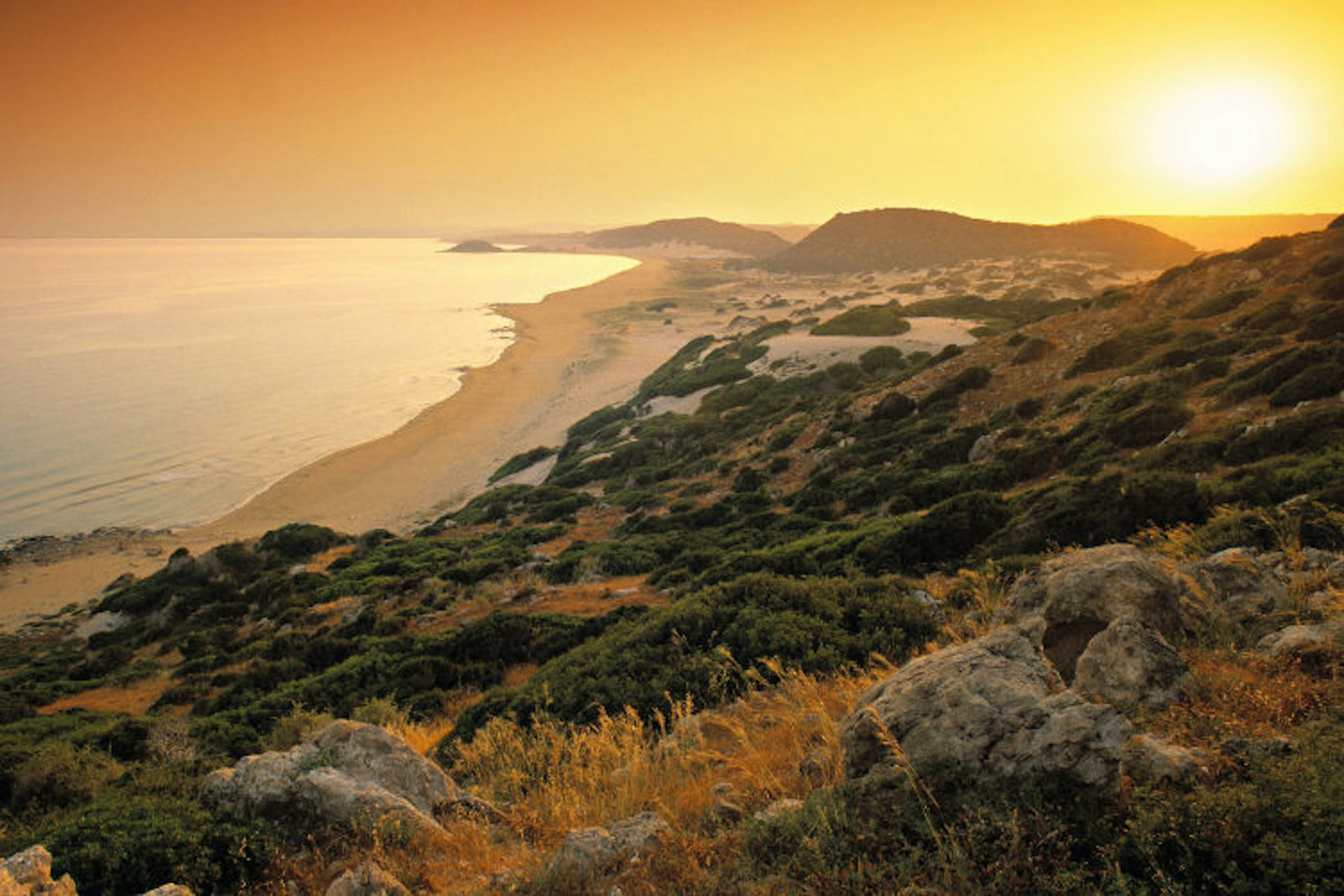
Off the beaten trail on the Karpas (Kırpaşa) Peninsula
The narrow tail of the Karpas (Kırpaşa) Peninsula is a time-warp region of blink-and-you-miss-them villages snuggled into the furrows of a ragged spine of cliffs and beckoning beaches of footprint-less sand. The hilltop beacon of Kantara Castle and the intricate mosaic-flooring leftover from the Basilica of Agia Triada provide historical stopovers as you drive up the coast. At the end, miles of empty sand and rustic bungalows of the Golden Beach provide unplug-and-disconnect opportunities for modern-day players at Robinson Crusoe.
Don’t miss: If it’s open (restorations are in progress), the Monastery of Apostolos Andreas is worth travelling to the peninsula’s tip for.
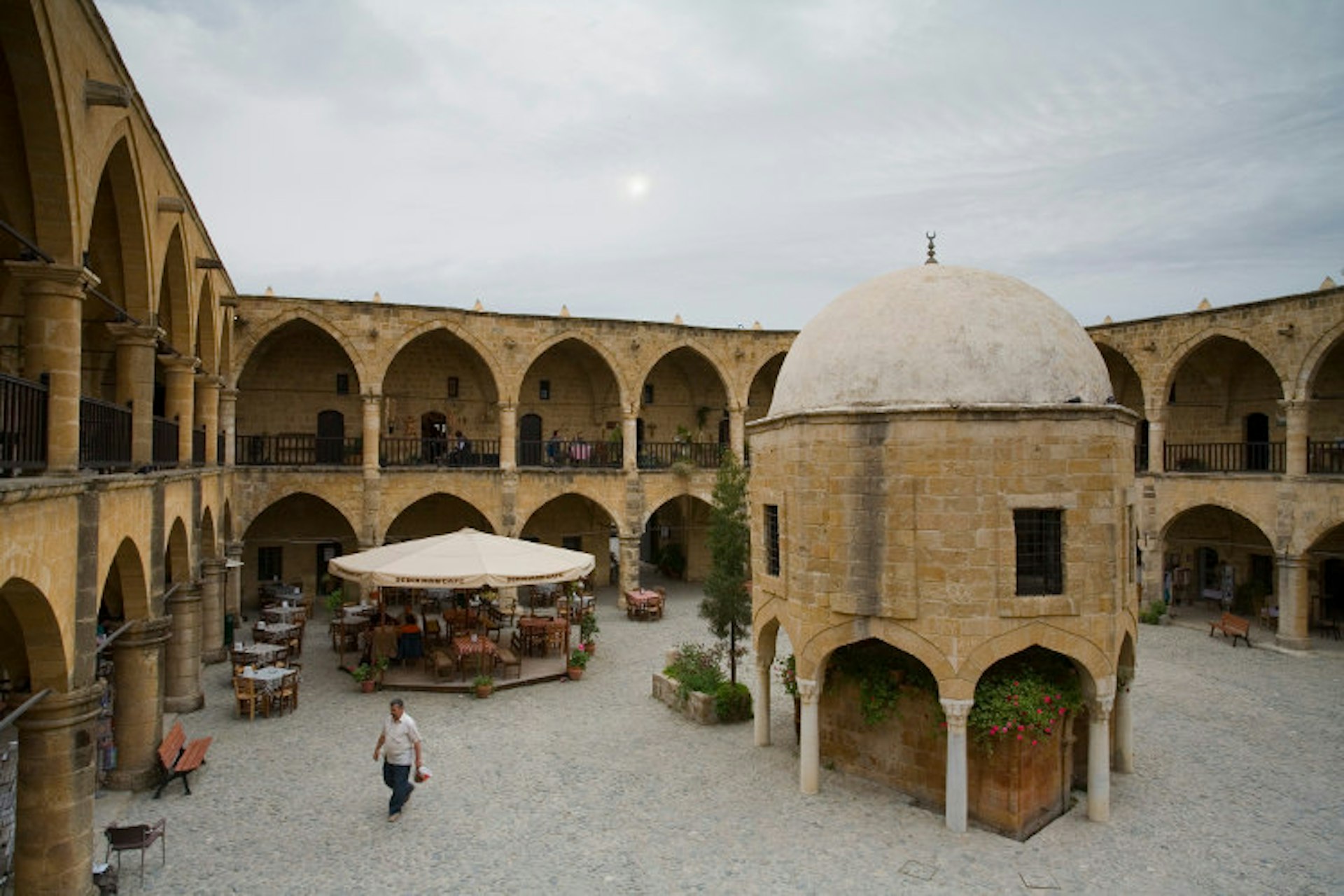
North Nicosia (Lefkoşa): Mevlevi monuments, mosques and museums
Most visitors to North Cyprus gravitate to the coast, but ignoring the capital of North Nicosia (Lefkoşa) means missing out on a chunk of historical sights. The looping lanes of the central walled city hold a clutch of fascinating architecture. Sit down for tea in the courtyard of the Büyük Han, an Ottoman caravanserai where traders and travellers once converged. Brush up on the culture of the renowned Mevlevi religious order at the Mevlevi Shrine Museum, then head to the Selimiye Mosque, once the grand Byzantine Church of Agia Sofia.
Don’t miss: Visit the Belediye Pazarı (municipal market) for some haggling fun.
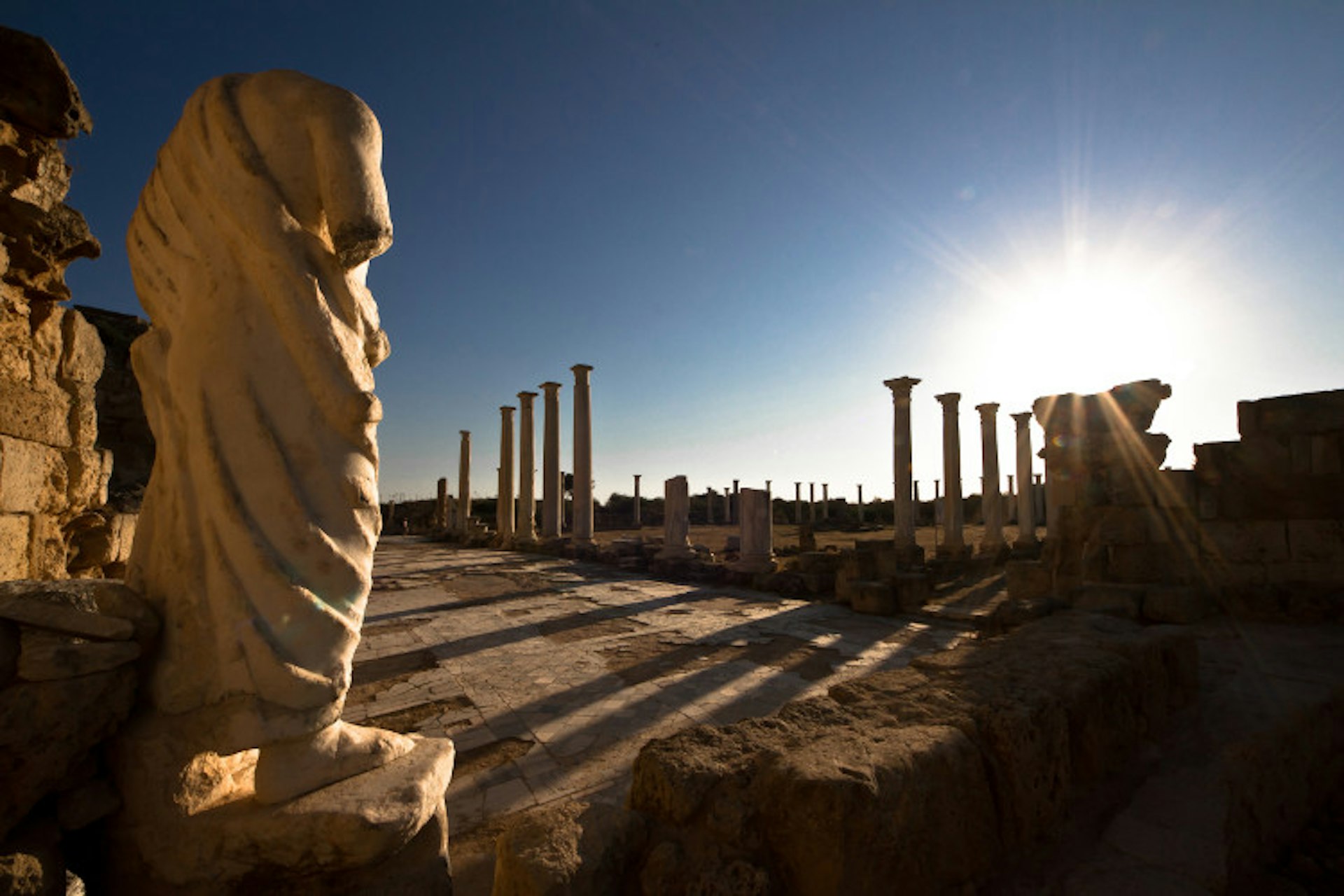
Turning back the clock in Ancient Salamis
Ancient Salamis is a meandering site which demonstrates the ebb and flow of the island’s conquerors. Today toppled basilicas sprout weeds between mosaic-floor fragments while headless marble statues keep watch over a vast Hellenistic Gymnasium. Founded after the Trojan War, Salamis switched between Assyrian, Greek, Persian, Greek again, Roman, Byzantine and Arab rule until the harbour silted up and it was abandoned completely. The main ruins contain the mammoth Gymnasium complex with Roman baths and a partially restored theatre, but the real fun here is exploring the trails which radiate out to 4th-century basilicas and the Roman-era reservoir and Agora.
Don’t miss: There’s a swag of sights nearby; poke about royal tombs at Salamis Necropolis .

Morfou Bay: churches and archaeological sites
The long drive out west is well worth it. On a cliff edge overlooking the sea, Ancient Vouni’s mysterious ruins sit scattered across the hilltop with million-dollar views over the tumbling green hills. Nearby is the ancient city-kingdom of Ancient Soloi , with its excavated mosaic floor all that is left of the basilica in which St Mark was baptised. Travel inland via sweet-swelling citrus orchards to reach scruffy Morfou (Güzelyurt) where the Agios Mamas Orthodox Church stands in the middle of town. Inside are vibrant frescoes and St Mama’s tomb, decorated with weird ear-shaped tokens left as offerings for miraculous earache cures.
Don’t miss: Tiny Güzelyurt Museum contains a dazzling display of artefacts from Ancient Soloi.
Explore related stories
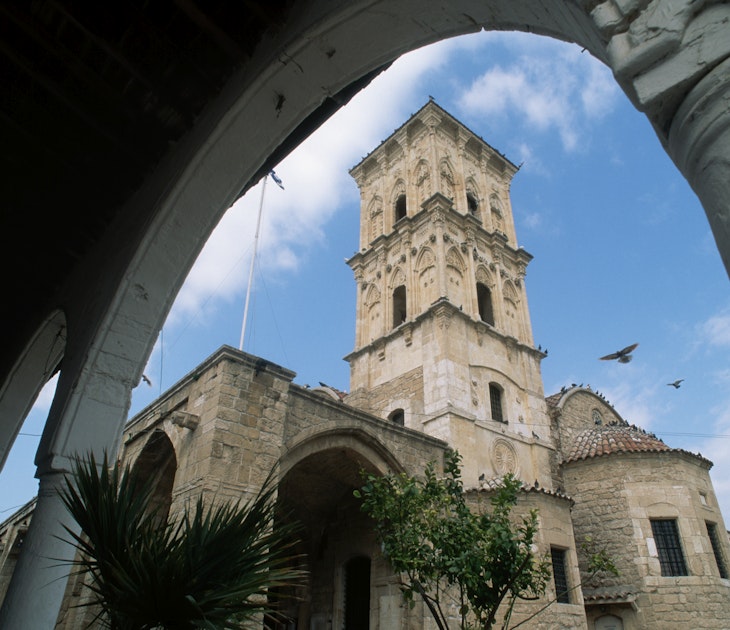
Jan 13, 2022 • 8 min read
Explore mosques, caves and more within two hours of Cyprus' capital city.
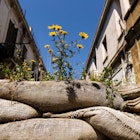
Jan 7, 2022 • 7 min read

Nov 17, 2021 • 7 min read
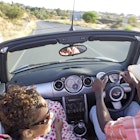
Jul 1, 2019 • 5 min read
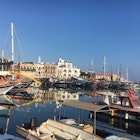
Jul 13, 2018 • 5 min read
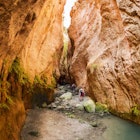
May 8, 2015 • 5 min read
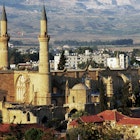
Apr 21, 2015 • 5 min read

Feb 15, 2024 • 16 min read

Welcome to North Cyprus
One of the most magical places in the world, full of mystery and mediterranean fragrance..
A cocktail of differing tastes, aromas, sounds, textures and colours, all over four seasons.
A cryptic emissary of history, study an island which has never lost its attraction over centuries, leaving behind artefacts and monuments from several ancient civilisations.
Explore destinations that have inspired and hosted notables in time, from Leonardo Da Vinci to William Shakespeare and even Walt Disney himself.
Spend days embracing nature, swim amongst protected turtles, see endemic wildlife and plants, meet monumental trees from hundreds of years, all whilst being swept away by the calm Mediterranean ambience.
Wander across stretches of untouched golden beaches, bathe in clear waters and reveal shades of blue you have never encountered before.
Hail an impressive cultural heritage that reveals the diverse treasures of the material world and welcomes you to a blend of rare traditions.
Experience village in natural areas still unchanged after centuries, whilst conserving the environment and improving the welfare of the locals.
Taste the gifts of mother nature and the original freshness of the Mediterranean, all with a Turkish Cypriot twist.
Celebrate on the island of immortal mythic love, birthplace of Aphrodite, goddess of Beauty and Love.
North Cyprus offers something unique for all its guests – from the sun worshipper to the botanist, from ecologically conscious families through to romantic couples.
Now is the time to discover the hidden paradise of North Cyprus, now is the time to visit NCY.
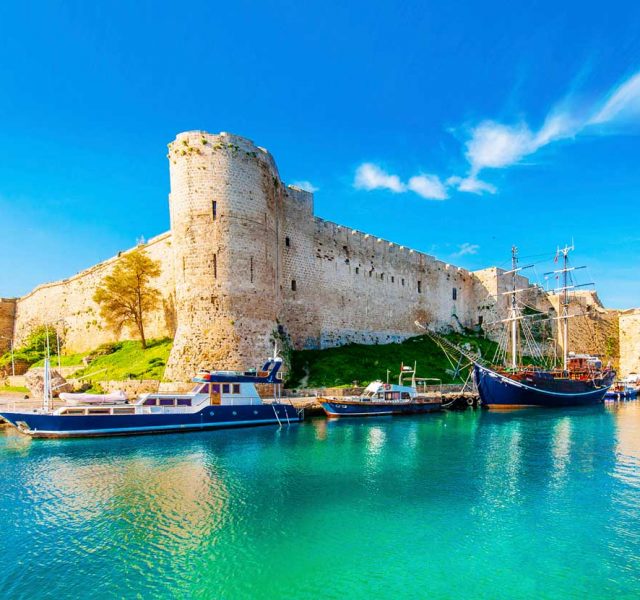
You May Also Like
Horse riding, besparmak mountain trail.
- History & Religion
- Health & Wellness
- Wedding & Honeymoon
- Sport & Training
- Night Life & Entertainment
- E-Brochures
- Tour Operator
- Accommodation
- Map of North Cyprus
- Visa & Entry
- Global Offices
- Climate & Weather
- Language & Religion
- Money & Currency
- Public Holidays
- Health & Safety
- Transportation
- Other FAQ’s

- South Korea
- United Arab Emirates
- Northern Cyprus
Things to Do in Northern Cyprus: Exploring the Top Attractions
Unveiling the Best Things to Do in Northern Cyprus: Your Ultimate Travel Guide . Are you ready to embark on a journey to Northern Cyprus and uncover its hidden treasures? Prepare to be enchanted by the charm of this unique destination as we reveal the top activities and attractions awaiting you. From historic landmarks to natural wonders, Northern Cyprus offers a wealth of experiences for every traveler.
Top eSIM Option in Northern Cyprus
Holafly offers an electronic SIM card (eSIM) ensuring seamless internet connectivity during your international travels, with simplicity and no roaming charges: Avail a 5% discount by purchasing through Holafly here.
Do I need a visa to travel to Northern Cyprus?
To determine whether you require a visa when visiting Northern Cyprus, you can easily verify here:
What are the must-see places and attractions in Northern Cyprus?
- ° Northern Cyprus
10 Places to Visit in Lefkosa | Northern Cyprus

7 Places to Visit in Girne (Kyrenia) | Northern Cyprus

Exploring Historic Sites
Delve into the rich history of Northern Cyprus by exploring its historic sites and landmarks. Visit the ancient city of Salamis, where you can wander through the ruins of an ancient Roman city and marvel at its well-preserved amphitheater. Explore the medieval fortress of Kyrenia Castle, perched on a rocky promontory overlooking the azure waters of the Mediterranean.

Relaxing on Stunning Beaches
Unwind and soak up the sun on Northern Cyprus’ stunning beaches, renowned for their pristine sands and crystal-clear waters. Head to Golden Beach or Lara Beach for a day of swimming, sunbathing, and water sports. Alternatively, escape to the tranquil shores of Alagadi Turtle Beach, where you may even spot endangered loggerhead turtles nesting along the coastline.
Enjoying Outdoor Adventures
For outdoor enthusiasts, Northern Cyprus offers a paradise of adventure activities. Hike along the scenic trails of the Five Finger Mountains, where you’ll be rewarded with panoramic views of the surrounding landscape. Explore the rugged terrain of the Karpas Peninsula, home to diverse wildlife and pristine natural habitats. Don’t miss the opportunity to go scuba diving or snorkeling in the crystal-clear waters of the Mediterranean, where you can discover vibrant coral reefs and underwater caves.
Discovering Cultural Gems
Immerse yourself in Northern Cyprus’ vibrant culture and traditions by exploring its charming villages and bustling markets. Visit the picturesque village of Bellapais, famous for its stunning Gothic monastery and quaint cobblestone streets. Explore the historic town of Famagusta, where you can wander through its ancient city walls and admire the beautiful mosques and churches that dot the landscape.
Indulging in Delicious Cuisine
No visit to Northern Cyprus is complete without sampling its delicious cuisine, which blends influences from Turkish, Greek, and Middle Eastern traditions. Treat your taste buds to mouthwatering dishes such as meze, kebabs, and fresh seafood, accompanied by traditional Cypriot wines and spirits. Don’t forget to try local specialties like hellim cheese and Turkish delight for a true taste of Northern Cyprus.
Relaxing in Luxury Resorts
Unwind and pamper yourself in one of Northern Cyprus’ luxurious resorts, where you can enjoy world-class amenities and breathtaking views of the Mediterranean Sea. Whether you prefer a beachfront retreat or a mountain hideaway, Northern Cyprus offers a variety of accommodation options to suit every taste and budget.
Exploring Hidden Gems
Venture off the beaten path and discover Northern Cyprus’ hidden gems, such as the enchanting village of Lefkosa . Explore its narrow streets lined with colorful houses, charming cafes, and artisan workshops. Visit the ancient ruins of Soli and Vouni Palace, where you can admire spectacular views of the surrounding countryside.
Experiencing Local Festivals
Immerse yourself in Northern Cyprus’ vibrant cultural scene by attending one of its many festivals and events. From traditional folk festivals to modern music concerts, there’s always something happening in Northern Cyprus to entertain and inspire visitors of all ages.
Conclusion: Things to Do in Northern Cyprus
As you can see, Northern Cyprus offers a diverse array of activities and attractions for travelers seeking adventure, relaxation, and cultural immersion. Whether you’re exploring ancient ruins, lounging on pristine beaches, or indulging in delicious cuisine, Northern Cyprus promises an unforgettable travel experience. So pack your bags, prepare for an adventure, and get ready to discover the best things to do in Northern Cyprus.
Privacy Overview
Our local experts can design your trip based on your preferences
Warning - You are using an outdated browser. Please upgrade your browser to properly view this website.

- Destinations
- Northern cyprus
Northern Cyprus travel guide
The Turkish-occupied north, which comprises around 38 percent of the island, contains some of Cyprus’ most beautiful landscapes, best beaches, most dramatic monuments and two of its most historic towns.
Partition and the subsequent political isolation long helped preserve the countryside from the ravages of mass tourism, but since 2000 development around Keryneia in particular has been every bit as intensive as anywhere in the South.
It is possible to whizz around Northern Cyprus in a day and cover – or at least glimpse – some of the main highlights, although unless you are short on time, this is not recommended. In three or four days you can see all the sights, including northern Nicosia , at a more leisurely pace.
Visiting the North
There are currently seven crossing-points along the buffer zone that separates North and South. There are two crossings for pedestrians in central Nicosia: Lidras/Lokmaci in the Old City and at the former Ledra Palace Hotel close to the Pafos Gate.
Border crossings for vehicles are at Agios Dometios/Metehan in the western suburbs of Nicosia; at Pyla/Pergamos (Beyarmudu), handiest for Karpasia; the so-called ‘Four Mile’ crossing within the Dhekelia British Sovereign Base Area, direct to Famagusta (Gazimagusa); at Astromeritis-Kato Zodeia (Bostanci), near Morfou (Güzelyurt); and Kato Pyrgos (Günebakan) on the north coast, allowing fast transit from the Polis area towards Nicosia.
The procedure for crossing is straightforward, though at weekends, and at Agios Dometios/Metehan especially, there can be long queues. Officially the border opens at 8am and closes for returning visitors at midnight, but the Nicosia crossings in particular tend to be open almost around the clock.
The Greek Cypriot police will view, but not stamp, your passport going in each direction; the Turkish Cypriot police will, upon request, give you a loose-leaf visa which should not be lost. Do not allow them to stamp your passport, or you will be banned from re-entry to the South.
There is currently no limit on the number of times you may cross. EU citizens have the right of unrestricted movement throughout Cyprus; there may be restrictions for non-EU citizens, especially coming from North to South, though these may not be enforced.
Motorists going from South to North must buy supplemental insurance at the border, since no EU-contracted policies are valid in the Turkish Cypriot sector. The minimum term is 3 days, and the policies – with a scandalously low level of cover, and a record of not paying out compensation – are all but useless other than to wave at police. If you have an accident that immobilises you in the North, get the car moving again without involving the car-hire company in the South – do not risk being stranded in the North.

Places to visit in Northern Cyprus
The mystical mountain castles.
North of Nicosia, the Mesaoria plain (Mesarya in Turkish) rises abruptly at the Keryneia Hills. The range’s most striking peak is Pentadaktylos (Besparmak, "Five Fingers").
The three castles now lie in noble ruin, victims not of enemy bombardment but of partial demolition by the Venetians. Most extensive is Agios Ilarion, which climbs along knife-edge ridges in three tiers of battlements and towers, reaching an altitude of 670 metres (2,200ft) under twin peaks, with steps leading up and down in all directions.
The castle was built in the 10th century around an earlier church and monastery honouring the hermit Hilarion, who fled here when the Arabs took Syria. The original Byzantine structure was fortified and extended by the Lusignans as a summer residence. The views down to Keryneia harbour are superb and, on a clear day, you can see the mountains of southern Turkey some 100km (60 miles) away.
Charming Keryneia
Offering the most beautiful sheltered harbour in Cyprus and a grand old castle, the charming town of Keryneia – Girne in Turkish, still Kyrenia to most Greek Cypriots and expats – is the most strikingly situated on the island. The venerable buildings that line the port have almost all been converted into bars or restaurants of indifferent quality, but the setting is so irresistible that most every visitor patronises them at least once.
Overlooking the harbour is massive Keryneia Castle, whose fortifications date mostly from the Venetian era. Today, its walls enclose a Byzantine chapel, royal apartments and various historical displays, including the Kyrenia ship, the oldest wreck ever recovered from the seabed (and featured on three Cypriot euro coins). This Greek trading ship sank in 30 metres (100ft) of water just offshore around 300 BC and was discovered in 1967 by a Greek-Cypriot diver. The surviving hull has been painstakingly preserved and remounted, and is shown with part of its final cargo.
The ancient city of Salamis
Overlooking the sea, the ancient city of Salamis rivals Kourion as the island’s finest archaeological site. For almost 1,800 years, Salamis competed with Paphos as the leading city in Cyprus and was a haven for exiled Greek artists and intellectuals. Renamed Constantia, it became the capital of early-Christian Cyprus in about AD 350, subsequently suffering an earthquake and the silting up of its port; the city was abandoned after the Arab invasions.
Average customers rating

{{_ "pagesAdmin.destinations.overviewCulturalFeaturesIn"}} {{currentName}}
{{_ "pagesAdmin.destinations.overviewViewAllFeatures"}} {{currentName}}
{{_ "pagesAdmin.destinations.overviewHistoricalHighlights"}} {{currentName}}
{{_ "pagesAdmin.destinations.overviewViewAllHighlights"}} {{currentName}}
Read more from the travel guide to Cyprus

North Cyprus Travel Guide
Book your individual trip , stress-free with local travel experts
Select Month
- roughguides.com
- north-cyprus
- Travel guide
- Itineraries
- Travel Advice
- Accommodation
Plan your tailor-made trip with a local expert
Book securely with money-back guarantee
Travel stress-free with local assistance and 24/7 support
For many visitors, crossing into Turkish-controlled north Cyprus is akin to time travel. Gone are the busy resorts, malls and familiar international chains of the south, replaced by remote villages and a slower place of life – “the Mediterranean as it used to be” in the words of the local tourist board. This sense of suspended animation can be dated precisely to the Turkish invasion of 1974 , when the north, stripped of its Greek Cypriot population, became cut off from the rest of the world, a self-styled republic recognized by no one but Turkey itself (see the section " The state within a state ").
Around Gazimağusa
Around girne, gazimağusa (famagusta), girne (kyrenia), güzelyurt and the west, north cyprus festivals, may & june, the state within a state.
The Republic’s government has done all in its power to limit relations between north Cyprus and the outside world, and the issue of Turkish-Cypriot (and indeed Turkish) occupation of property owned by Greek Cypriots in the north continues to be a major stumbling block in any movement towards reunification. The republic’s stance on “legal” entry points and property ownership hasn’t changed, and is very clear. Nevertheless, it is now commonplace for Greek Cypriots in their thousands to cross into the north, both on day-trips and for overnight stays. This is largely due to the gradual opening up of the Green Line , the de facto dividing line between the two communities – there are now seven crossing points , and two more are under discussion. The process of entering the north from the south has been made even simpler since Mustafa Akinci became President in 2015 – one of his first acts was to get rid of irksome visa requirements. Consequently, it is perfectly feasible for travellers staying in the south to see as much of the north as they wish, with many attractions little more than half an hour’s drive away from the south’s major resorts. Others choose to spend their whole trip in the north, though this necessitates travelling via Turkey.
There is certainly plenty to draw you here. North Cyprus boasts two of the island’s best-looking towns ( Girne and Gazimağusa ), half the capital city (Lefkosia/ Lefkoşa ), three of its mightiest Crusader castles ( St Hilarion , Buffavento and Kantara ), and arguably the island’s most significant archeological site at Salamis . Its wilderness areas, particularly the Kyrenia Mountains , are a hiker’s paradise and many of its beaches remain mercifully free of high-rise resorts. Furthermore, any visit to Cyprus which includes both sides of the island offers the unique experience of two very different cultures: Orthodox, Greek Cypriot, and Muslim, Turkish Cypriot. There’s also the small matter of cost – being outside the Eurozone, the north can feel considerably cheaper than the south, and its tourist infrastructure, though inferior, is gradually improving.
As for sightseeing in the north, you might find that many museums and other places of interest seem rather neglected and old-fashioned, while its hotels and restaurants lack the sophistication of the south. You might also come across a cavalier attitude to published opening times – if something’s really important to you, try to phone ahead or check with the tourist office. Finally, if you haven’t had a chance to obtain Turkish Lira , don’t worry: euros and dollars are widely accepted.
Some 8km north of Gazimağusa , and signposted from both the coast road to Boğaz and the main road to the capital, is a group of ruins which are among the most important and impressive in all of Cyprus. By far the most famous and most photographed are the remains, largely Roman, of Ancient Salamis . But within a couple of minutes’ drive of this colossal seaside site are the Royal Tombs , the Monastery of St Barnabas , now a museum, and the prehistoric remains of Enkomi-Alasia . Allow a day for a full inspection, or half a day for edited highlights.
Ancient Salamis
One of the most significant archeological sites in the Mediterranean, Salamis is notable not only for the richness and extent of its remains but also for its agreeable beachside setting. The site itself is huge and, despite almost a century of archeological digging, has still not been completely uncovered. The approach to the site is along a road beside a huge picnic area, and the first thing you’ll see is a restaurant ( Bedi’s ) with a recently added beach bar and pier and a fine sandy beach. You can park either behind the restaurant or in one of the archeological site’s two car parks. A plan of the site at the entrance (clearly signposted from Gazimağusa) offers two walking routes , one short, one long. Luckily the most important and most comprehensively investigated buildings are very close together just beyond the entrance. If you intend to view every single part of the city, it’ll involve a lot of walking so come prepared.
Brief history
Founded around 1075 BC by Greek and Anatolian settlers and reinforced by refugees as Enkomi-Alasia was abandoned, Salamis was an important cultural centre throughout Classical Greek and Roman times, becoming the richest and most important city on the island for around 1700 years. Its kings claimed descent from its founder, the Trojan War hero Teucer, brother of Ajax and son of the King of Salamis, the island to the south of Athens (hence the name). Destroyed by earthquakes in 332 and 343 AD, the city was rebuilt by Byzantine Emperor Constantine II , who modestly renamed it Constantia. But the harbour silted up, there were further earthquakes, and the coup de grâce was delivered by the Arab raids which plagued Cyprus from the seventh century AD onwards. The inhabitants of Salamis moved south to where modern Gazimağusa now stands.
The first impressive group of remains are the Gymnasium and Baths , built originally by the Greeks and substantially modified by the Romans and Byzantines. At the heart of the building is the huge open courtyard surrounded by columns, and with the remains of a plinth in the centre. This is the palaestra , where people exercised or stood gossiping in the shade of the surrounding colonnaded stoa . Much of the tessellated marble flooring remains, with clearly legible inscriptions in places. To the west of the palaestra are the remains of a number of shops. To the east are the baths with the usual series of rooms of escalating heat – from frigidarium to caldarium . In places the floor has collapsed, revealing the hypocaust (underfloor heating system) beneath. Plunge pools stand at either side of the baths, the northern one (through which you enter the site) rectangular and surrounded by headless statues. There are also latrines, several octagonal pools and an aqueduct for bringing in the water.
Leaving the baths via the south plunge pool, a column-lined path leads to the sketchy remains of an amphitheatre/stadium. Beyond here is the much more impressive theatre , one of the highlights of the site. Built during the reign of Augustus (27 BC–14 AD), it has the standard Greco-Roman semicircular layout, though built upwards in the Roman manner rather than fitting into a hillside as the Greeks were wont to do. As you enter it from the north, the seating curves sharply to your left around the semicircular orchestra, the stage and proscenium straight ahead. Much restored (the new seating is easily distinguished from the original – it’s white instead of red/brown), it could originally accommodate 15,000 spectators in fifty rows of seats. In the orchestra was an altar to Dionysus, and the stage was backed by statues.
When you leave the theatre, the short route swings round through the second car/coach park back to the entrance. The long route continues south, past the remains of the largest basilica in Cyprus, founded by St Epiphanius in the fourth century AD – his empty marble-lined tomb can be seen at the end of the south aisle – to a large Byzantine cistern or vouta in which water, brought via an aqueduct 50km away, was stored before being distributed to the baths. Beyond this is the large Roman forum or agora (of which there’s not much left apart from a single column) and the few remains of a temple to Zeus . Returning back past the St Epiphanius basilica, then turning off towards the sea, brings you past another Byzantine building called “ The Olive Press ” on the plans, but whose original purpose is unknown – it was used to house an olive press in the Middle Ages. Beyond this is the Byzantine Basilica of Kampanopetra , a slightly later, fifth-century AD building.
St Barnabas and the Church of Cyprus
Continuing along the road west from Salamis, takes you to the Monastery of St Barnabas , once one of the most important Christian sites on the island, now an archeological and icon museum. This handsome monastery, said to have been built as the result of a divinely inspired dream, consists of the church of St Barnabas , behind which lie the monastery cloisters: a colonnade of pillars on three sides of a lush and well-tended garden. An extension – further colonnades and a campanile – though modern, fits in pretty well with the rest of the building.
The archeological museum , housed in rooms that look out into the garden, is less than impressive – a miscellany of Neolithic axe-heads, Bronze Age pottery and Ottoman artefacts; the Icon Museum, housed in the church of St Barnabas, is a somewhat perfunctory collection of icons lit by domestic light bulbs. A few bits of the Orthodox furnishings remain in place – the pulpit, a chair, the iconostasis. Look out in particular for the four frescoes to the right of the entrance which tell the story of the finding of St Barnabas’s body. Before leaving, take a look at what is said to be the tomb of the Apostle Barnabas himself, contained in a 1950s-built mausoleum. The tomb is along a short track that heads east from the car park, past excavated rock-cut tombs, to the mausoleum’s modern steps.
One of the great figures of early Christianity, St Barnabas , was a Jew, born in Salamis, who became one of the earliest converts to the new religion and founded the Cypriot church. Together with his cousin Mark the Evangelist and the pivotal St Paul , he travelled extensively in both Cyprus and Asia Minor, spreading the gospel. In fact Barnabas was so successful that the Jewish elders in Salamis had him stoned to death around 75 AD. Mark retrieved his body and buried it secretly in a cave to the west of the city. Over time, the location of the cave was forgotten.
Four hundred years later the Cypriot Church under Archbishop Anthemios was faced with a takeover bid by Antioch , the patriarch of which claimed suzerainty over the island’s Christians – a claim supported by Byzantine Emperor Zeno. In 478 AD, when all seemed lost, Anthemios was visited in a dream by the spirit of St Barnabas, who told him where his body was buried – beneath a distinctive carob tree on the western edge of Salamis. Here Anthemios discovered a skeleton along with a copy of The Gospel of Matthew written in Hebrew by St Barnabas himself. Anthemios shot off to Constantinople, donated the good book to the emperor and the Church of Cyprus was triumphantly granted autonomous or “autocephalous” status. Zeno also paid for a monastery to be built over the saint’s final resting place. The independence of the Cypriot Church was to become particularly important over a thousand years later when it was able to use its privileged position to shelter its flock from the worst excesses of Ottoman occupation.
Although there’s plenty to see in Girne, its possibilities are likely to start running out after a few days. Fortunately, its sandy coastline offers some excellent beaches while inland are some heavyweight sights including St Hilarion Castle and Bellapais village. Indeed, it shouldn’t be forgotten that Lefkoşa and Güzelyurt are also within easy reach.
Hazret Omer Tekke
On a rocky shore, 10km east of Girne, sits the Hazret Omer Tekke , built to house seven Muslim martyrs . It’s not easy to find – despite being a major attraction for both tourists and the faithful, it merits only a tiny sign left off the main road east of Girne – look out for it 1.8km after the massive Port Gratos hotel complex, and immediately before a “Tempo” supermarket. The story goes that the seven (the commander Omer and six of his men), now regarded as saints, were killed in the seventh century, and their bodies put in a cave. Centuries later, after the Ottoman conquest, their bodies were discovered, still in a miraculous state of preservation, and moved to a mosque and mausoleum specially built to receive them – their tombs are to the right as you enter. The beautifully designed mosque is in a spectacularly pretty setting, with views across a bay towards the mountains, but the effect is somewhat spoilt by the towering modern lamppost above it and intrusive modern toilet in the car park. The mosque itself, however, once rather the worse for wear, having been battered and buffeted by wind and rain each winter, has been given a face-lift.
Almost exactly halfway between St Hilarion and Buffavento is the flower-bedecked village of Bellapais , a tangle of narrow lanes and steep hills, with fine views down to Girne’s modern harbour. The village is synonymous with its medieval abbey , one of the most beautiful in the eastern Mediterranean. Yet, it’s not just the abbey that makes Bellapais so popular – one of its principal cheerleaders was English author Lawrence Durrell , who lived here in the 1950s and included detailed descriptions of the village and its inhabitants in his book Bitter Lemons . Bellapais is one of the principal tour-stops on the island, so it is often packed. Try to avoid high season and late morning/early afternoon.
Despite being such a popular attraction, Bellapais is not easy to find . Travelling east on the main road from Girne, turn right at the Bellapais-signposted “peace” roundabout (with its two figures holding olive branches), and, a few hundred metres along, take the first (unsignposted) main turning left. At the top of the hill turn left at the (unsignposted) roundabout, and continue on to the village. Or just stop and ask.
Bellapais abbey was founded by the second Lusignan ruler Aimery to house Augustinian monks expelled from the Church of the Holy Sepulchre when Jerusalem fell to Saladin in 1187. Known as the “Abbaye de la Paix” or the Abbey of Peace, most of what remains dates from the period 1267–84, with the cloisters and refectory being added in 1324–59. In its early years the monastery adopted strict Premonstratensian beliefs, but as time went on it started to earn a name for a variety of corrupt practices , where monks ate and drank to excess, took wives (sometimes two or three), had children, and would then only accept their own sons into the monastery as novices. Though it built up considerable wealth, its treasure was plundered by the Genoese in 1373. After the Ottoman Conquest in 1571 the abbey became derelict, and was raided for its dressed building stone – only the church escaped, as it continued to be used for worship by the local Greek Orthodox community. Vandalization of the monastery continued under the British, who even used the refectory as a rifle range.
Bellapais Abbey
Bellapais Abbey stands on a small square with trees, lawns, flowerbeds and park benches. Having bought tickets, you can walk through the entrance gateway whose ruins indicate that it was once heavily fortified. Nearby is the enviably sited Kybele Restaurant , which occupies the abbey’s kitchen court, and a set of steps to the abbey’s lofty medieval tower , topped by the vivid red and white of the Turkish and TRNC flags; despite signs warning that it’s not safe to climb, the tower is far too seductive a photo opportunity for most visitors. Beyond here a tree-shaded courtyard leads to the church , the most complete part of the monastery. Unlike Western monasteries it is flat roofed, with a rather dark, gloomy interior. To the north of the church are the cloisters , the most atmospheric part of the abbey, three sides of which are in reasonable condition, but the fourth (western) side is ruined. The four rather large poplar trees in the quadrangle, planted in 1940, are home to a loud flock of sparrows. To the north of the cloisters, with access through a superb doorway with dog-tooth edges and three Lusignan coats of arms, is the refectory . Some 30m long, 10m wide and 12m high, it is covered by a single-span stone vaulted roof, an architectural triumph considering that it stands right at the edge of a cliff. At the far end (the end with the small rose window) stood the Abbot’s high table, with, along the length of the north and south walls, the long tables of the ordinary monks. On the north wall is a small pulpit from where scriptures would be read to the diners silently munching below. Outside the refectory is a fountain where the monks would wash their hands before eating. If you look carefully you can make out the Roman sarcophagus into which it has been incorporated
Lawrence Durrell’s House
Lawrence Durrell lived in Bellapais from 1953–56, detailing his experience in Bitter Lemons . To find his home, walk up from the abbey square along Aci Limon Sokak which climbs past the Tatlisulu market – there is a small hand-painted sign “Bitter Lemons 400m up on left” attached to a telegraph pole and pointing skywards. Another sign further up indicates that you’re nearly there but should really visit the Gardens of Irini guest house. Durrell’s house (dated 1893) is large and yellow, with brown doors and window shutters and a wooden-fenced roof terrace. In case you were in any doubt, there’s a ceramic plaque above the door. Across the road is the public water fountain (marked “ER 1953”), which played a prominent part in the tortuous and hilarious process of buying the house – the purchase takes up a whole chapter in the book.
Another chapter of the book is devoted to the “ Tree of Idleness ” that stands opposite the abbey. Durrell was warned never to sit under it because “its shadow incapacitates one for serious work”, a belief that arose from the idle hours spent by many villagers under the tree. It is now the centrepiece of a rather good restaurant.
Buffavento Castle
Buffavento Castle is the second of the three great fortresses that are strung out along the Kyrenia mountains (the others being St Hilarion and Kantara) . Whereas St Hilarion is easily accessible, Buffavento is more remote, with the result that you may well be the only visitor – a major plus in terms of atmosphere. However, don’t expect refreshments, information leaflets or the like – there’s not even a ticket kiosk. Part of the excitement of the visit is the wild, tortured landscape of the “ five fingers ” mountain through which you pass, and the winding mountain road up to the castle, which reveals views across the whole island.
Though at 940m above sea level the highest of the three castles, Buffavento is also the smallest and worst preserved, more a romantic Gothic ruin than a sturdy fortress. The castle was much damaged by the Venetians to prevent its future use, and badly eroded over the centuries by the elements (though its name means “not yielding to winds”).
From the car park, a path and steps rise steeply towards the ruins, which you can see lining the clifftop high above. Bear in mind that it requires a fair bit of hard climbing (though there are plenty of hand rails) and there’s little shade (if you get into trouble, dial T155). As you climb, the views south are particularly impressive. As at St Hilarion, the hillside is carpeted with flowers in spring.
The road to Buffavento
Buffavento Castle is accessed from the main coast road east of Girne. Look out for the sign (“Buffavento 6km”) on the right, past Acapulco Beach. From Lefkoşa, take the main Gazimağusa road east, then take a left (signposted “Girne”) at a roundabout after 14km. Ignore earlier signs for Buffavento via Taskent – you’re better off sticking to the main roads. After the turn-off, a good road climbs for 13km up towards an impressive blade of a mountain (called Pentadaktylos because its five peaks look something like a hand) past a large quarry – you may have to overtake heavily laden lorries grinding along at barely walking speed – to the Buffavento turning.
The mountain road to the castle looks narrow and uninviting, and is easy to miss, but it’s well surfaced (not gravel as is sometimes reported) and meanders fetchingly off into the mountains. It certainly doesn’t, as some guidebooks say, require four-wheel drive. There are stretches where there are steep drops to the left and no guardrail, and in places you might have to dodge rocks that have fallen off the cliffs to the right, but it’s easy enough driving if you ignore the amazing views and keep your eyes on the road. After 6km a clear sign points up a steep hill to the castle car park.
St Hilarion Castle
Of the three magnificent castles in the Kyrenia mountains, by far the most accessible, popular and most complete is St Hilarion . Dramatically sited on a rocky crag with elegantly ruined turrets, towers and windows, it certainly fires the imagination – in writer Dame Rose Macaulay’s words it’s a “picture-book castle for elf kings” – and formed the template for both the fairy-tale castles of King Ludwig in Bavaria and Walt Disney’s Magic Kingdom. If possible, visit in spring when the surrounding landscape is a riot of wild flowers. The views from the snack bar are to die for.
To reach the castle from Girne you need to drive south along the Lefkoşa motorway as it climbs up into the mountains, and just before it gets to the top of the pass and begins its descent to the Mesaoria plain, follow the yellow signpost off to the right. A 3km side road snakes up through a military camp , past a large statue of a soldier in battledress at its entrance. (The firing range on the left was once the site for medieval tournaments.) Up a sharp hill, you arrive at a small car park outside the castle gate. The whole trip from Girne takes about twenty minutes. On this road bear in mind that you’re in a restricted military area, and not allowed to stop, let alone take photographs. This is a pity because it’s as you approach the castle that you get by far the best view.
St Hilarion was originally a monastery dedicated to an obscure fourth-century Syrian hermit who lived in a cave on Mount Didymus (“Twin peaks”). An ascetic of the most extreme kind, Hilarion reputedly never washed and built up a following thanks to banishing demons and performing miracles. The monastery’s strategic position, commanding the pass through the Kyrenia mountains and overlooking the northern coastal plain, was not lost on the Byzantines. Facing repeated Arab raids, they converted it into a castle, probably sometime in the eighth century AD. The Lusignans improved and strengthened it in the thirteenth century – most of what you can see today was built in 1228 by John d’Ibelin – and it became not only a military stronghold but also a palace for Lusignan royalty, nicknamed “Dieu d’Amour”, loosely translated as Cupid’s Castle. This was the castle’s heyday, an era of tournaments, knights and courtly intrigue, especially under the rule of King Peter I and Queen Eleanor of Aragon .
St Hilarion continued to be a castle of importance during the latter Lusignan period, but when the Venetians took over in 1489 it fell into disrepair and became the ruin it is now, to see action only during the mid-twentieth-century troubles, when the Turkish TMT occupied it.
Once through the castle entrance – which includes a barbican – you will find yourself in the large outer bailey originally built by the Byzantines. Follow the sign to the right for the first of many wonderful views then continue upwards along the “Main Road”. It’s a well-made path with occasional steps, and you’ll see as you climb a watchtower and, to your left, the impressive curtain wall that rises steeply to the upper parts of the castle. This outer bailey was the area into which peasants and livestock could be withdrawn when the castle was under attack.
The castle stables are now used as a small visitor centre which offers lots of sketches, and information about the Lusignans. Beyond the stables, the path winds steeply upwards to the tunnel-like gate of what is described as the “second section”, perhaps the Lower Ward . It’s a warren of alleys, buildings and rooms opening off a central tunnel, some of which were part of the original tenth-century monastery. The first structure, up to the right, is the monastery church , now open to the elements, but with a well-preserved apse. North of here is the Great Hall , now home to the Café Lusignan . Along one side of the hall is a wooden balcony hanging over a staggering view of the coast below – on a clear day you can see Turkey, some 100km away.
Beyond the hall are a group of rooms which serviced it – kitchen , buttery and privies – and a belvedere , a shaded vaulted terrace with picnic tables and arches, again with those superb views. To the left (west) of the hall are more workaday rooms and the castellan’s quarters , which contain displays with mannequins illustrating medieval life. Continuing along the path which tunnels through this clutch of lower ward rooms, you emerge into the sunlight to signs pointing one way (off to the right) to the barracks , and Royal Apartments , and the other way, onward and upward, to the third section.
You pass a very large cistern which appears to have been built rather than hewn out of the rock (it has stone buttresses), and then the path, partly steps, partly rock-strewn tracks, soars upwards. Just before you reach the top, a fork leads left to the isolated Prince John’s Tower , where several of John’s Bulgarian mercenaries were murdered. Turning right instead of following the path to Prince John’s Tower brings you to the main gate of the Upper Ward . Once through the gate, there are, in succession, a Byzantine tower, a kitchen, a cistern and a group of subsidiary buildings. Beyond them are a further set of Royal Apartments and the famous Queen’s Window at which Queen Eleanor is said to have sat. From here glorious views to the west open out, with, in the foreground, the village of Karmi. All that remains to be seen is the Western Tower and the Zirve (summit) of the mountain, marked with a sign: “732m – Congratulations! You are at the peak”.
Dastardly deeds at St Hilarion
On January 17, 1369, Peter I, King of Cyprus was stabbed to death as he slept in his palace in Nicosia, supposedly by three of his own knights. He was succeeded by his son, Peter II. Queen Eleanor – now the Queen Mother – became convinced that her husband had been killed on the orders of Peter’s brother Prince John . Despite rumours of her infidelity in the king’s absence she vowed to avenge his murder. John had taken up residence in St Hilarion Castle , which he held with a force of Bulgarian mercenaries, while Peter’s other brother James held Kyrenia. A Genoese invasion, possibly at Eleanor’s instigation, led, in 1374, to the surrender of Kyrenia, and James ended up as a prisoner in Genoa. Eleanor now turned her attention to John. Having persuaded him that all was forgiven, she warned the prince that his Bulgarian forces were planning to overthrow him. John responded by throwing several of them to their deaths from Prince John’s Tower. Eleanor’s accusations were almost certainly untrue – a Machiavellian plan aiming to both bring him closer and weaken him. The drama concluded when Eleanor invited John to dine with her and the young king in Nicosia. They ate in the very room where Peter I was murdered and, when the final dish arrived, she dramatically flung back the cloth to reveal her dead husband’s blood-stained shirt. This was the signal for retainers to appear and stab Prince John to death in his turn.
The charming city of GAZIMAĞUSA (Famagusta), is second only to Girne in the north’s tourism league table. Like Girne it boasts an atmospheric old town surrounded by crumbling Venetian walls, a legacy of its strategic position facing the Middle East. Its shops, restaurants and cafés are threaded through and between the photogenic remains of churches destroyed or damaged during the Ottoman siege of 1570–71. Immediately to the south lies the ghost town of Varosha , once the heart of Famagusta’s tourist trade, now isolated by the Turkish invasion of 1974. To the north lie a clutch of historically important sites – ancient Enkomi/Alasia , the monastery of Apostolos Varnavas , the Royal Tombs , and above all ancient Salamis – and the miles of beaches that line Gazimağusa Bay.
Confusingly, Gazimağusa is known by a host of different names. The city was renamed Gazimağusa (sometimes shortened to Mağusa ) by the Turks in 1974, having been known as Famagusta , from French (Famagouste) and Italian (Famagosta), since Lusignan/Venetian times. In Greek it is known as Ammochostos . If that wasn’t puzzling enough the name Famagusta/Ammochostos is also used by the republic for the district across the Green Line to the east, of which the city is the notional capital.
The current site of Gazimağusa was established during the Byzantine era by refugees from Salamis, after that city was destroyed by Arab raids. The new city reached its zenith under the Lusignans, especially after the Fall of Acre to the Saracens in 1291 AD brought an influx of Christian merchants and craftsmen. When the pope banned direct economic ties with the infidel, Gazimağusa became a major entrepôt for the whole of the Middle East, famous for its wealth and as a melting pot of different cultures and beliefs – hence the huge variety and number of churches (one, it was said, for every day of the year). It went into something of a decline from the late fourteenth century onwards, but was fortified under the Venetians as they tried to meet the growing threat from Ottoman expansion. As at Girne and Lefkosia, this did them little good – the city fell in 1571 after a nine-month siege , thus completing the Ottoman conquest of the island. It is said that 100,000 cannonballs crashed into the city during the siege and, since no attempt was made by the Ottomans to repair the damage, the remains still stand today. Three years after the siege, Greek residents were expelled from within the walls. Many of them resettled just to the south, creating what later became Varosha. During the 1960s and early 1970s, Varosha and its beaches were at the heart of massive tourist development, only to be frozen in time by the Turkish invasion.
Visiting Gazimağusa from the south
To get to Gazimağusa from the south , there are two convenient crossings, both in the Dekhelia Sovereign Base area. The first is the most useful if you’re staying in Larnaka, and is known variously as the Pyla/Beyarmudu/Pergamos crossing . From Larnaka, take the coast road or the A3 motorway towards Agia Napa, and follow the signs off to the left, signposted Pyla. Drive through Pyla, and up the hill on the other side. The crossing is a couple of kilometres along this main road. Once across, you’re in the village of Beyarmudu – remember the name, since you’ll need to head towards it on your return. Drive for 9km to an intersection, cross it, and continue for another 9km till you join the main Lefkoşa–Gazimağusa highway. Turn right, and you hit the dual carriageway all the way to Gazimağusa. On your return, make sure you don’t miss the turn off the highway towards Beyarmudu.
The second option, which is especially handy if you’re staying in the Agia Napa/Protaras area, is the Agios Nikolaos/Akyar/Strovilia crossing . Drive through Paralimni and head for Derynia. Continue through Derynia, heading for Frenaros along the main E305 road, then follow the signpost right to Vrysoulles. Turn right at the T-junction, and the crossing point is about 3km beyond. Once across, Gazimağusa is just 5km beyond.
The city walls
Originally built by the Lusignans, Gazimağusa’s city walls owe their present impressive dimensions and design to the Venetians, who spent half a century up to 1540 remodelling them for medieval battle; for example, building ramps up which to haul cannons, and making square towers round, so that they were proof against artillery fire. A dry moat was cut around three of the four sides – the fourth faces the sea. The northwest section of wall and the Martinengo Bastion, with a group of places of worship, were until recently a restricted area because of the presence of an army camp, but this has now been abandoned, and the whole area, and indeed the walls as a whole, are again open to visitors – British officers in the 1930s even played golf along the top of the walls.
The Land Gate and Ravelin Bastion
In the southwest corner of the walls is the Land Gate , one of the two original main gates (the other being the Sea Gate) to the old town. As you approach across the bridge, look to the right for a good view of the stretch of wall to the first “Santa Napa” bastion. Once inside you’ll find the tourist office to the left. The Ravelin Bastion (or Rivettina Bastion) in front of the gate was heavily involved in the Siege of Famagusta, and when it finally seemed bound to be taken by the attackers, the Venetians blew it up, killing, it’s said, a thousand Ottoman soldiers and a hundred of their own. This was also where the white flag of surrender was flown, prompting the victors to rename it Akkule, or “White Bastion”. The innards of the bastion, a warren of passages, rooms and flights of steps, are open to the public.
The Canbulat Bastion
As you circle the walls in an anticlockwise direction, after the Ravelin Bastion, the next major bastion – the Canbulat Bastion – is in the southeast corner. It is named after one of the Turkish heroes of the 1571 siege of Venetian Famagusta by the Ottomans, Canbulat (pronounced “Djambulat”), the Bey of Kilis. Faced with a fearsome defensive device consisting of knives attached to a rapidly rotating wheel, Canbulat rode his horse full tilt into it, killing both himself and his steed, but jamming the wheel and making it ineffective. His tomb, which is in the bastion, once had a fig tree growing out of it, whose fruit, if eaten by young women, would not only ensure conception, but also that the resulting children would be as brave as Canbulat. There’s a small museum displaying artefacts associated with the siege, ranging from costume and artillery to ship models and weapons. Look out particularly for the “memorial” tomb of Canbulat, and the reconstruction of a sixteenth-century Ottoman tent. The collection is well displayed, and a steep flight of stone steps gives access to further exhibits and views of the walls from the roof of the bastion. Just beyond the entrance to the museum, through an archway, the entrance to the port which stretches along the eastern wall of the city is marked by a large ceramic mural of the Ottoman conquest of Famagusta.
The Sea Gate
After the Canbulat Bastion, the walls swing north, parallel to the sea. Note to the left of the wall, the remains of the Hospital of St Antony , which was built using stone taken from the ruins of Salamis. Beyond them is the Sea Gate , which once provided access from the port. A squat and solid-looking fortification with a signature statue of a Venetian lion at its base, it has massive iron-clad wooden gates, Ottoman in origin, and a heavy Venetian iron portcullis (both shrouded in tarpaulin at the time of writing). The top of the Sea Gate is accessible via a steep flight of steps from inside the town at the end of Liman Yolu; the views across the town one way, and the port the other, are worth the climb. Looking north from the Sea Gate you can see a variety of ships in the harbour, many of them Turkish naval vessels (which is why the northern parts of the walls are off limits). Incidentally, a local myth says that the Venetian lion opens its mouth once a year, giving bystanders the chance to plunge their hands down its throat to retrieve treasure.
Othello’s Tower
Beyond the Sea Gate stands the massive Othello’s Tower . The name is a little fanciful, bestowed by the British on the strength of the locations mentioned in Shakespeare’s play: “A seaport in Cyprus” and “a hall in the castle”. Indeed, its alternative name, “ The Citadel ”, is a better description. Above the entrance in the southwest corner is a large relief of the Lion of St Mark, the Venetian emblem. Despite its Venetian exterior, you can still make out the original Lusignan fortress beneath: the large central courtyard on the north side is the Great Hall. The views from the battlements are as good as those from the Sea Gate, and offer prospects of the citadel itself, as well as of the port, snuggled up to the eastern wall of the city. Othello’s Tower has been renovated in a combined Greek- and Turkish-Cypriot initiative, driven by the Technical Committee on Cultural Heritage. The fabric of the building is now in good order and is open to the public, but much remains to be done – in particular, the almost liquid sand underfoot in the Great Hall can be treacherous. As you explore the tunnels and passages of the Tower, look out for the ventilation shafts designed to clear smoke from the cannons inside the tower; a few of these were filled in with rubble, prompting rumours that the Venetians had buried their gold here rather than see it fall into the hands of the Ottomans.
The Siege of Famagusta
Fresh from its victory over Nicosia and the surrender of Kyrenia, the Ottoman army approached Famagusta in confident mood in September 1570. Before them lay a small garrison of Venetians, no match it would seem for thousands of battle-hardened Turkish troops. Having blockaded the port (thus preventing relief from the Venetian navy), the Ottoman commander Mustafa Paşa ordered his artillery to pound the city while his engineers built trenches and a huge earth ramp to scale the walls. The Venetian defenders, hopelessly outnumbered, put up a gutsy resistance under the command of Marcantonio Bragadin and his lieutenant Lorenzo Tiepolo , cunningly moving soldiers about so that the invaders were tricked into thinking them a far more formidable force. The Venetians managed to hold out for ten months before the citadel was breached in July 1571. Bragadin agreed to a negotiated surrender where all civilians could leave the city and his soldiers could sail for Crete.
Things went largely to plan until during the hand-over ceremony when Mustafa Paşa, up until then courteous towards his opponent, suddenly exploded with rage, killing several Venetian officers and cutting off Bragadin’s ears and nose. A massacre of the remaining Christians in the city followed. Bragadin, after several weeks’ imprisonment, was publicly executed , his body quartered, and his skin, stuffed with straw, sent riding on an ox through the town before being sent to the sultan in Constantinople. The treatment of Bragadin so incensed the Venetians that it was said to inspire their forces at the Battle of Lepanto a couple of months later, halting Ottoman expansion in the Mediterranean. Bragadin’s flailed skin was rescued from Constantinople in 1596 and returned to Venice, where it still rests in the Basilica di San Zanipolo.
The old town
Within the walls, the old town of Gazimağusa is an appealing jumble of ruined churches, odd bits of medieval masonry, cafés, restaurants and shops, tree-shaded and flower-bedecked and much of it pedestrianized. The best approach, once you’ve entered through the Land Gate and perhaps visited the tourist office, is to head up the main street Istiklal Caddesi towards the central square, Namik Kemal Meydani , perusing shops and cafés as you go. East and south of the main square is a maze of narrow streets and alleys, good for souvenir hunting, and overlooked by picturesque ruins. You can imagine a similar scene in medieval times, though with the great Gothic churches intact, rising above people’s homes.
Ecclesiastical gems – a walking tour
Dotted around the old town are numerous minor churches, often in a poor state of repair but full of interest. A good place to start is just off Namik Keymal Beydani, on Kisla Sokagi opposite the distinctive glass-dotted dome of a hamam, where, next to each other, two little fourteenth-century churches stand. They are invariably identified as the churches of the Knights Templar and Knights Hospitaller , the latter based on the Hospitaller coat of arms above the western door. One is now a cultural centre and art gallery, the other, surprisingly, is a bar. A short walk northwest, by the Othello Tower, is the ruined St George of the Latins , one of Gazimağusa‘s oldest churches. Based on the height off the ground of its surviving windows, and the presence of a parapet, it has been speculated that it was a fortified church predating the Lusignans. There’s little left now but a single wall with large lancet windows, precarious but undoubtedly romantic. Beyond St George of the Latins, a walk along Gengiz Topel Cad then left onto Server Somuncuoglu Sok brings you to the northwest corner of the town. Here the churches of Agia Anna and St Mary of Carmel , the Armenian Church and the converted Tanners Mosque are clustered together in the angle between the walls that meet at the Martinengo Bastion. Since this is near a military zone, access can be tricky, and photography is definitely a no-no. Back at Namik Keymal Beydani, a stroll due south brings you to St George of the Greeks which is (or was) a large Byzantine Orthodox Church (all that remains are three apses and a flying buttress at one end and the entranceway on the other) – while a little further southeast takes you to Agios Nikolaos and Agia Zoni which are small and pretty, the first a ruin, the second pretty much intact.
Varosha (Maras)
If the old town of Gazimağusa is full of ruins dating from the Ottoman siege, the “new town” of Varosha , now officially MARAS , is a sad reminder of a more recent conflict. Having been expelled from the old town in the 1570s, the Greeks established a prosperous settlement here, surrounded by orange groves. Over the years the population of the new town eclipsed that of the old and in the twentieth century its beach area, Glossa, became an upmarket resort , “The Monte Carlo of the Middle East”, visited by the likes of Elizabeth Taylor and Paul Newman. During the 1974 invasion, the Turkish army seized Varosha in its entirety, forcing its Greek population to flee to the south. Today, sealed off by fences, barbed wire and checkpoints, it festers in the sun, its high-rise hotels crumbling, its cracked tarmac claimed by weeds and scrub.
For almost forty years the fate of Varosha has been a painful source of resentment among Greek Cypriots and a strong bargaining tool for the Turks who have deliberately avoided any development of the resort. Various proposals have been put forward to end the impasse – the latest to turn the town into a UN-administered buffer zone which would allow Greek Cypriots to return as an act of goodwill, rather than a prelude to reunification. This would, it is thought, help grease the wheels of Turkey’s accession to the EU. In August 2012 President Demetris Christofias said Varosha “can, as in the past, be a bridge of peace, hope, cooperation and cohabitation”, and it has been one of the issues mentioned in ongoing negotiations during 2015 and 2016.
GIRNE (still widely known by its Greek name Kyrenia or Keryneia ) is the most beautiful town in Cyprus, owing to its ravishing harbour , mighty Venetian castle , and a backdrop of sharp and craggy mountains. It even has a pleasant climate, courtesy of those mountains, which bring cooler air and a greener landscape than in the rest of Cyprus. Following a lengthy period of street development and road works, Girne is now an easy city to navigate – the main approach road from the motorway ends in a central roundabout which is next to the main square Belediye Meydani and a large car park. It’s also the main public transport hub. From this roundabout, the city’s two main streets head east and west. In addition to road improvements, the whole city centre and harbour area have been tidied up, with clutter removed, buildings painted and streets cobbled or block paved. Girne is a place that all visitors to the island should try to take in, for the day if not longer.
Apart from the harbour and the castle, there’s much else hidden away amongst Girne’s steep serpentine alleys. The Anglican Church, the Cafer Paşa Camii , the Ottoman Cemetery and the Chrysopolitissa Church attest to the spiritual life of the town, the tiny Folk Art Museum and Icon Museum to its cultural life, and the Bandabuliya together with a host of shops to its commercial side. Finally, Girne’s numerous cafés and restaurants offer the opportunity to eat, drink and socialize with friendly locals, or just enjoy the views and the chance to people-watch in comfort.
Girne was established in the tenth century BC by the first Greek invaders of Cyprus, the Mycenaeans , and can therefore claim to be the settlement with the longest history of continuous occupation anywhere on the island. During the time of Classical Greece it was one of the ten kingdoms of Cyprus. In the seventh century AD, Arab raids led to the building of a castle by the Byzantines , possibly on the site of an earlier Roman fort, later added to and strengthened by the Lusignans and then the Venetians . Although the castle was never taken by force of arms, it was starved into surrender by the Ottomans in 1570.
During the occupation that followed, Girne declined and stagnated, but saw something of a renaissance during the British period as the new rulers built roads and developed the harbour. It became a busy port, exporting carob pods, importing goods from Greece and Turkey, and building ships. Prosperous and with a delightful climate, it was no wonder that British civil servants, streaming back from the collapsing empire, saw it as a paradise to which they could happily retire. However, this Levantine Shangri La changed as Cyprus gained its independence in 1960, and was then riven by intercommunal friction. Girne was one of the first places to fall during the 1974 Turkish invasion. With properties being looted, and then confiscated during the early post-invasion years, British expats left in droves, their number falling from 2500 to a couple of hundred. The spaces left by them, and even more by departing Greek Cypriots, were filled by Turkish Cypriots relocating, mainly from Lemesos, and by Turks coming in from the mainland. Since then, the Brit expat community has burgeoned once more, though issues over property ownership in the north have stifled the second-homes market.
Girne Castle
Girne Castle has a confusing architectural history, having been adapted, destroyed, rebuilt and improved so many times. The Byzantines first built a castle here, perhaps on the remains of an earlier structure, in the tenth century AD. Rectangular in shape, it was reinforced and extended during the Lusignan era, with the addition of living quarters and a moat. Its present form took shape under the Venetians in the sixteenth century, with the addition of the west and south walls and the construction of three new bastions. The British used the castle as a prison and as a police academy, and, during the late 1950s, to incarcerate EOKA fighters.
Never taken by force (though it was almost destroyed by the Genoese in 1373), the castle did succumb to the Ottomans in 1570. It is said that the Venetian commander of the castle negotiated a truce with the Ottomans until it became clear how the siege of Nicosia turned out. When the Ottomans presented him with the severed head of his Nicosian counterpart, he promptly surrendered.
The harbour and around
Busy with excursion boats, laced with wooden pontoons and bristling with masts, Girne’s medieval harbour is one of the most picturesque in the Mediterranean. Almost perfectly circular, its western side is dominated by the massive Girne castle , while the harbour entrance is now protected by a long breakwater built after independence. The horseshoe-shaped quay is taken up with restaurants and small hotels, some in converted carob warehouses, others in modern buildings, with balconied upper storeys and canopied ground floors. Nearby is the Customs House , converted by the British from a medieval tower to which, during troubled times, a chain was slung from the castle to prevent access to the harbour. It is now occupied by the tourist office. There’s an even older, ancient harbour immediately to the east (you can see it from the Venetian tower of the castle) and a much newer, modern one even further east beyond that.
Visiting Girne from the south
The best place to cross over from the south if travelling to Girne is at the Agios Dometios checkpoint west of Lefkosia city centre. It’s not well signposted – drive west along Leoforos Agiou Pavlou, and when the road bears sharply to the left immediately after Nicosia Racecourse, look out for a sharp right turn. The crossing is a few metres up this side street. Once across, you’re in Metehan, and it’s no more than a well-signposted half hour’s drive to Girne. But do memorize the route after the crossing so that you can find your way back – the signposts are for Metehan , and there’s no mention of it being a crossing point.
The western part of north Cyprus is not much frequented by visitors, yet it’s easy to access following the opening of more crossing points from the south . The region’s main town, Güzelyurt , is worth a brief wander for its archeological museum and the Agios Mamas Church. But it’s the twin ancient sites of Soli and Vouni that are the real draw.
The site of the ancient city of SOLI has few equals in north Cyprus, possibly on the whole island, thanks to its instant comprehensibility and the quality of information provided. It offers a detailed picture of life in late Roman and early Byzantine times, in a city set on a hillside overlooking the Mediterranean.
You’ll find the site just after leaving Gemikonaği, travelling west on the coast road. Look out for a small sign pointing to the left just after the announcement that you’re in Yedidalga (Potamos). The sign is easy to miss, but the huge roof covering part of the site isn’t.
Soli was originally settled in the eleventh century BC – its first mention in written records is as “Si-il-lu” in an Assyrian tribute list. According to legend, it was named after the Athenian philosopher Solon, who, while visiting his friend King Philocypros, suggested he built a new capital here, pointing out the excellent natural harbour and fertile soil. Soli soon flourished, though siding with the Ionians against the Persians led to it being sacked in 498 BC. Biblical scholars will also recall Soli as the site of St Mark’s baptism by St Auxibius, and it soon became an important Christian centre , particularly once the Edict of Milan (313 AD) had legalized the religion throughout the Byzantine empire. By the seventh century, however, the harbour was silting up, and a succession of Arab raids, especially the one in 653 AD, led to a gradual decline, such that by the ninth century AD Soli had been abandoned.
Soli is vast, and only part of it has been excavated. Once you’ve parked and bought your ticket (get hold of a plan) you’ll see the ruins of the third-century AD Roman town down the hill to the right – the agora, a portico, the remains of a nymphaeum – and immediately ahead the remains of the great Byzantine basilica , protected by a roof, and with wooden walkways to allow visitor access. In fact, the remains you can see are of two basilicas – Basilica A, dating from the fourth century, and Basilica B from the sixth century. Basilica A had a wooden roof supported on stone columns, and had mosaic floors, some geometrical, others with the figures of birds and dolphins. The most famous of these representations is of a swan against a blue background, with flowers, dolphins and a duck. In the apse is a dedication: “Jesus, protect those who had these mosaics made”. Basilica B was built entirely of stone, and instead of mosaics made of cuboid tesserae was floored with opus sectile tiles (larger pieces specifically shaped for the job). Though the mosaics take pride of place, other parts of the basilicas are also explained – a presbytery, an atrium, a column which still lies where it fell in the eighth century AD, and the “Mystery of Soli” – a staircase or ramp leading down to what’s thought to be a tomb dedicated to St Auxibius or even a treasure house (unfortunately sealed off).
Up the hill behind the basilica is an early third-century AD Roman theatre , extensively renovated and sometimes still used for performances. There’s very little left of the original masonry – the British pilfered most of it for use in the building of the Suez Canal and Port Said.
Ancient Soli
Soli was originally settled in the eleventh century BC – its first mention in written records is as “Si-il-lu” in an Assyrian tribute list. According to legend it was named after the Athenian philosopher Solon , who, while visiting his friend King Philocypros, suggested he built a new capital here, pointing out the excellent natural harbour and fertile soil. Soli soon flourished, though siding with the Ionians against the Persians led to it being sacked in 498 BC. Biblical scholars will also recall Soli as the site of St Mark’s baptism by St Auxibius and it soon became an important Christian centre , particularly once the Edict of Milan (313 AD) had legalized the religion throughout the Byzantine empire. By the seventh century, however, the harbour was silting up, and a succession of Arab raids, especially the one in 653 AD, led to a gradual decline, such that by the ninth century AD Soli had been abandoned.
Soli is vast, and only part of it has been excavated. Once you’ve parked and bought your ticket (get hold of a plan) you’ll see the ruins of the third-century AD Roman town down the hill to the right – the agora, a portico, the remains of a nymphaeum – and immediately ahead the remains of the great Byzantine basilica , protected by a roof, and with wooden walkways to allow visitor access. In fact, the remains you can see are of two basilicas – Basilica A, dating from the fourth century, and Basilica B from the sixth century. Basilica A had a wooden roof supported on stone columns, and had mosaic floors , some geometrical, others with the figures of birds and dolphins. The most famous of these representations is of a swan against a blue background, with flowers, dolphins and a duck. In the apse is a dedication “Jesus, protect those who had these mosaics made”. Basilica B was built entirely of stone, and instead of mosaics made of cuboid tesserae was floored with opus sectile tiles (larger pieces specifically shaped for the job). Though the mosaics take pride of place, other parts of the basilicas are also explained – a presbytery, an atrium, a column which still lies where it fell in the eighth century AD, and the “ Mystery of Soli ” – a staircase or ramp leading down to what’s thought to be a tomb dedicated to St Auxibius or even a treasure house (unfortunately sealed off).
Up the hill behind the basilica is an early third-century AD Roman theatre , extensively renovated and sometimes still used for performance. There’s very little left of the original masonry – the British pilfered most of it for use in the building of the Suez Canal and Port Said.
The Maronites of the Koruçam Peninsula
A Maronite community has existed on the Koruçam Peninsula for at least nine hundred years, though it has now shrunk to a few hundred people. Maronite Christian beliefs originated in Syria and the Lebanon, and arose from an arcane seventh-century dispute about the nature of Christ. The Maronites lost the argument, were declared heretical , and had to take to the hills. They came to Cyprus, it is said, on the coat-tails of the Crusaders: they’d helped their fellow Christians against the Muslims in the Holy Lands (though one theory postulates that they were simply joining a Maronite community which was already on the island). The Maronites congregated on the Karpaz and Koruçam peninsulas – the former disappeared through emigration and intermarriage, the latter are, just about, still there. During the troubles of the 1960s the Maronites sided with the Greeks, and following the Turkish invasion in 1974, were harassed, issued with identity cards, and refused citizenship. Most left for the south, or went abroad. Since the progressive opening up of the Green Line since 2003, however, Maronites who had made their lives in the south can now visit freely. The future of their distinctive language , a fusion of Aramaic and Arabic, is less rosy, and its demise as a living language is predicted within a few decades.
Visiting Güzelyurt from the south
There are two crossing points in the Güzelyurt region. The Astromeritis/Zodia crossing , opened in August 2005, is one of the better-signposted and is also one of the quietest crossing points. Astromeritis is a fast 30km west on the A9/B9 motorway/dual carriageway from the outskirts of Lefkosia. Once across into Zodia, it’s only 3km to Güzelyurt. The Yeşilirmak/Limnitis/Kato Pyrgos crossing is the most recent, built jointly by the north and south and opened with great fanfare in October 2010. Again, it is easy to find – a ten-minute drive east from Kato Pyrgos brings you to the crossing point, after which it’s a scenic 32km drive to Güzelyurt. This makes possible a number of enjoyable routes through the north. Lefkosia–Girne–Güzelyurt–Kato Pyrgos, for example, is certainly feasible in a day, in either direction, or try Astromeritis–Güzelyurt–Kato Pyrgos.
Whatever the festivals are called, in North Cyprus they usually include a wide variety of activities and events , not all directly relating to the subject contained in the title. So the tulip festival includes a pinball competition, an olive festival a darts competition. And many also throw in a beauty contest for good measure.
Tepebasi Tulip Festival (mid-March) Walks and displays to celebrate the Cyprus tulip ( Tulipa Cypria ) and a wide range of activities – including bicycle tours, dancing and a pinball competition, in villages near Lapta.
International Famagusta Art and Culture Festival (May) Huge music, theatre, ballet, visual arts festival held at various venues in Gazimağusa.
International Bellapais Music Festival (end of May/early June) A festival of chamber and choral music and dance in one of North Cyprus’s most beautiful settings – Bellapais Abbey.
Girne Living Culture and Art Festival (whole of June) Turkish and Cypriot drama and music festival held in Girne’s amphitheatre.
Lapta Tourist Festival (June) Huge range of competitions aimed at and put on by the expat community – pool, table tennis, remote-controlled boats – there’s even an “alcohol-drinking competition” (details at wcyprusscene.com).
Lefke Walnut Festival (June) Festival of walnut-based sweets in the village in the western part of north Cyprus.
Iskele International Folk Dance Festival (end of June) Week-long festival where folk dancing groups from all over the world take part, staging a series of nightly performances.
Gecitkale Hellim (Halloumi) Festival A variety of events and demonstrations revolving around the Cypriot cheese halloumi – cooking, photography (not just photographs of cheese), beauty and fashion competitions.
International Girne Olive Festival Dance and drama, music, food (with an olive theme) and drink, shooting and darts competitions. Starts in Kyrenia Castle, then moves to the village of Zeytinlik.
The Turkish Republic of North Cyprus (TRNC), as it has called itself since 1983, is still in many ways a pariah state, and this lack of international recognition continues to starve it of investment. Global chains such as McDonald’s and Starbucks are conspicuous by their absence and its tourist industry is still dwarfed by that of the south. In part this is self-inflicted: the shabbiness of many of its museums and attractions contrast markedly with the magnificence of its totalitarian-style military monuments and the regular sight of Turkish troops and bases, often incongruously close to tourist attractions, can be a jolt to the senses. The empty shells of Orthodox churches and monasteries that dot some parts of the landscape are also an uncomfortable reminder of the wonton destruction that followed the invasion or “intervention” as the Turks put it. While the north remains in political limbo, its future seems to hang on demographics – with Turkish settlers now outnumbering Turkish Cypriots, north Cyprus increasingly feels like an offshore province of Turkey rather than the independent state that it claims to be.
Discover more places in Cyprus
- Lefkoşa (North Nicosia)
- The Karpaz Peninsula
The Rough Guides to Cyprus and related travel guides
In-depth, easy-to-use travel guides filled with expert advice.
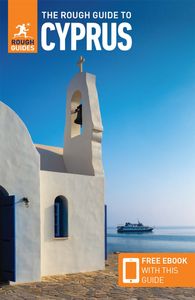
Find even more inspiration here

Planning your own trip? Prepare for your trip
Use Rough Guides' trusted partners for great rates

written by Andy Turner
updated 16.02.2024
Ready to travel and discover Cyprus?
Get support from our local experts for stress-free planning & worry-free travels.
- Where to stay
- Travel advice
Northern Cyprus

- 2 Other destinations
- 3.1 History
- 3.2 Geography
- 5.1 Entry requirements
- 5.2 By plane
- 5.3 By boat
- 5.4 By road
- 6.3 By taxi
- 9.2 Shopping
- 9.3 Property
- 16 Stay healthy
- 17 Stay safe
The Turkish Republic of Northern Cyprus (TRNC, Turkish: Kuzey Kıbrıs Türk Cumhuriyeti ) is a republic on the north and east side of the island of Cyprus . It's a holiday destination with beaches and antiquities set in the Mediterranean Sea 70 km south of Turkey , the only country to recognise it. In 2021 its population was 383,000.
Towns [ edit ]

- 35.19 33.363611 1 Nicosia ( Lefkoşa / Lefkosia ) is the divided capital, with the historic centre within its stout walls.
- 35.340278 33.319167 2 Kyrenia ( Girne / Keryneia ) has an attractive harbour and castle. This is the main base for visitors, with hotels along the coast for 20 km on either side.
- 35.116667 33.95 3 Famagusta ( Mağusa / Ammochostos ) is another walled city, with a beach strip north; south is blighted by the border zone.
Other destinations [ edit ]
- 35.527756 34.277344 1 Karpaz is a long remote peninsula in the northeast. It has good beaches, Byzantine monasteries, and over-friendly wild donkeys.
- 35.179 32.612 2 Erenköy is an exclave separated from the rest of TRNC. Formerly the village of Kokkina, it's nowadays a military area.
Understand [ edit ]
History [ edit ].
Cyprus has been contested for millennia by rival nations, who sought its minerals, cotton and control of sea lanes between Europe and the Levant. Turkey was a relative newcomer to this dogfight, as it was only by the 16th century that the Ottomans had substantial control of the mainland and could expand into a maritime empire. They captured Rhodes in 1522 and their next target was Cyprus, where the Venetians were ensconced. That terrible assault succeeded in 1571 and is the background to Shakespeare's Othello . The Ottomans retained Cyprus for 300 years and many Turks settled here, especially in the north, but overall there remained a Greek majority population.
Mainland Greece and almost all its islands likewise fell under Ottoman rule, but by the 19th century that empire was in decline, and Greece won its independence in 1830. That was the springboard for the Megali campaign to regain all the "Hellenistic" territories, which included Crete, Cyprus, and just about every trading port around the east Mediterranean. There were vicious wars that threatened to de-stabilise a much wider region (code for "let the Russians in") so the western powers stepped in, and in 1878 Britain took over Cyprus though still acknowledging the Ottomans as nominal rulers. That pretence ended in 1914 when Turkey entered World War I on the side of Germany and the island became part of the British Empire.
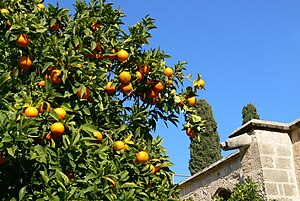
The post-war treaty of 1923 led to extensive population exchanges between Greece and Turkey, but this didn't affect Cyprus, where the two communities continued to detest each other. Throughout all this, Greek Cypriots dreamed not of independence but enosis , a merger with mainland Greece. After World War II Britain's colonies moved towards independence but here one community insisted on enosis while the other imagined that Cyprus would joyfully become Turkish the minute the Union Flag was hauled down. Factional violence became organised into rival militias EOKA and TMT, and Cyprus slid towards civil war.
The outcome was independence on 15 Aug 1960. Britain retained two large military territories on the south coast, but there was no partition, rather a power-sharing agreement and noble declarations about protecting the rights of minorities. One crucial clause in the peace deal gave Britain, Greece and Turkey the right to intervene militarily "to restore the status quo" in case the deal was overthrown. But power-sharing was dysfunctional from the outset and community violence continued; a series of peace initiatives were launched and sank. In 1974 the enosis faction seized power in a coup, and Turkey therefore invaded. By the time a ceasefire was agreed they controlled the northern third of the island, including its chief port Famagusta and half the capital Nicosia.
Talks to convert that ceasefire into a definitive treaty have dragged on ever since, so it's a "frozen conflict", with the United Nations patrolling a buffer zone between the two sides. In 1983, the Turkish-held area declared itself the "Turkish Republic of Northern Cyprus", TRNC. So far only Turkey recognizes the TRNC, while all other governments and the United Nations regard it as a puppet state and recognize only the government of the Republic of Cyprus over the whole island, excluding the British military territories. Since the 1990s a thaw between Greece and Turkey has led to easing of tensions within Cyprus, and it's nowadays easy to pass between the two parts, but the razor wire, watchtowers and derelict no-man's land are as stark as ever. The other dynamic from 2004 was Cyprus joining the European Union, a form of enosis stretching to Lisbon and Dublin that Turkey also aspires to join, but which raises questions of border control and trade rules with regard to TRNC.
Geography [ edit ]
The Kyrenia or Pentadactylos ("five-fingered") mountain range rises from the coast to 1000 m. It's a limestone ridge with ancient fortresses perched on its heights, which dwindle eastwards to create the panhandle of the Karpaz Peninsula. Inland is a broad plain, fertile and traversed by the main roads. Further south the land rises again towards the Troodos Mountains, the mineral-rich uplands that caused copper ( cuprum ) to be named after Cyprus, but the Turkish advance halted before it.
TRNC is at 35° N in the east Med, the same latitude as Crete or central Tunisia, so it has a subtropical Mediterranean climate with hot, dry summers and cool, wet winters. Frost is rare at low altitude but in winter the sea is cold and rough, with a raw wind blowing off it, and many hotels and other facilities close up. April-June is a good season to visit for landward exploring, but Sept-Oct is better for water sports.
Visit North Cyprus is the TRNC tourist agency.
Talk [ edit ]
The language of Northern Cyprus is Turkish (see the Turkish phrasebook ), with a distinct dialect in casual conversation. English is widely spoken in the hospitality sector, especially in Kyrenia. Obscure dialects of Greek persist among a few gnarly old folk, but you're more likely to overhear Russian, as TRNC like mainland Turkey remains easily accessible to them. Some local phrases are:
- Napañ? ( nah-PANG ; how are you, literally how are you doing? - informal) or Naparsınız? ( nah-par-sing-EEZ - formal or plural)
- Eyidir ( a-e-DEER ; I'm fine) or Napayım ( nah-pay-EEM ; I'm fine, literally, what should I do?)
- Kaçadır bu? ( ca-TCHA-durr boo ; how much does this cost, literally, for how much is this?)
- Çok güzel yer Kıbrıs ( chock gue-ZELL yerr KEEP-rees ; Cyprus is a very beautiful place)
Get in [ edit ]

Entry requirements [ edit ]
Most visitors can enter Northern Cyprus easily, whether by land from the Republic of Cyprus, or from elsewhere. Difficulty may arise if you enter the Republic from TRNC then leave by a different route, or vice versa, see below.
No advance visa is needed except for citizens of Syria, Armenia and Nigeria. Everyone else can simply rock up at the border by land, sea or air. A national ID card is sufficient for citizens of Turkey, the EU, and other countries within the Schengen Area (Iceland, Norway, Switzerland and Liechtenstein). All others such as the UK or USA need to show a passport valid for 6 months beyond the date of entry. In theory you might be asked about your finances, accommodation and onward travel but they seldom bother. The outcome is a visitor visa for 30 to 90 days; this may not be extended, does not permit work or residence, and 90 days in any 180 is your maximum. Other visas for work, study, business and property ownership have the same 90-in-180 limit.
You can ask for your entry stamp to go on a separate slip of paper, though TRNC passport stamps are no longer a problem for later visits to Greece or Cyprus. The need might arise if you had to shuttle between TRNC and the Republic, and didn't want to fill up your passport.
Visas in advance for citizens of Syria, Armenia and Nigeria are obtained in person from a TRNC "Mission Abroad" (since they're not accredited as an embassy or consulate). There are two dozen, for instance in New York, Washington DC, London and Berlin, but none in the three source countries; perhaps one of the seven Missions in Turkey would be convenient.
North-south itineraries are nowadays only a potential problem. The south maintains that entering the island through the north is illegal. They equally maintain that EU citizens have freedom of movement throughout Cyprus and the Schengen Area. They also have border posts along the Green Line that they claim isn't a border. The upshot of this muddle is that EU citizens have no difficulty, but others (eg British) are at the whim of north-south politics. These are nowadays pragmatic, but any diplomatic rift with Turkey might suddenly lead to Cypriot immigration officials blocking your crossing from TRNC. On south-to-north itineraries, non-EU passport holders should ensure they're stamped out, to avoid later accusations that they've overstayed in the EU.
Do not bring a dog. The island of Cyprus is free of dog rabies, but it's common on mainland Turkey so cross-infection in TRNC is a risk.
By plane [ edit ]

You could also fly to Larnaca in the south and take a taxi to the border in Nicosia.
By boat [ edit ]
Akgunlerdenizcilik ferries connect Kyrenia ( Girne ) to Alanya , Taşucu and Mersin in Turkey, and Famagusta ( Mağusa ) to Mersin.
The fast ferry from Alanya only sails in summer: from Alanya Th & Su at 12:00, from Kyrenia W & Sa at 10:00. This is a catamaran (shown in timetables as deniz otobüsü ) for foot passengers taking 2 hr 30 min.
A similar fast-cat ferry, summer only, takes 80 min from Mersin. It sails from Mersin Su Tu & Th at 21:00, from Kyrenia M W & F at 23:00.
The third fast-cat route, summer only, takes two hours from Taşucu. It sails Fridays only from Taşucu at 14:00 and from Girne at 10:00.
The only car ferry is from Taşucu and takes six hours. It sails four times a week in summer: from Taşucu on Su M Tu & Th at 23:30 and from Kyrenia M & Tu at 14:00, W & F at 23:30. This ferry sails all year.
Ferries from Madenli south of İskenderun are not sailing, as the earthquake of 2023 damaged the port.
With your own boat, Kyrenia and Famagusta are the designated Ports of Entry to clear TRNC immigration and customs.
By road [ edit ]
The land crossings between TRNC and the Republic are:
- Yesilirmak (by car) is the westernmost tip of TRNC, beyond Lefke .
- Lefke (by car) south of Lefke village. A new route south of Lefke is under construction in 2024.
- Astromeritis / Zodhia (by car) south of Güzelyurt .
- Agios Dometios / Kermia / Metehan is the chief crossing by road, and pedestrians are permitted, at the west edge of Nicosia.
- Ledra Palace (pedestrians only) is the oldest crossing, west flank of the old city walls of Nicosia.
- Ledra Street (pedestrians only) is the most convenient for day-trips, an alley through the bazaar in old Nicosia.
- Pergamos / Beyarmudu (by car) via Dhekelia military zone.
- Strovilia near Agios Nikolaos (by car) in the east of the island near Famagusta .
If you hire a car from the south, check their small print to ensure they allow their vehicles to go north.
Car insurance from the Republic is not valid in TRNC, so you have to buy at the border; you can't buy elsewhere. And while the border posts are open 24 hours for immigration and customs, the kiosks for insurance are not. The main crossing at Agios Dometios / Kermia / Metehan has a kiosk open 08:00 to midnight, check the latest hours if you intend to use the others. You buy for a minimum of one month, which in 2024 costs €120 and is only valid for third party not comprehensive.
Get around [ edit ]
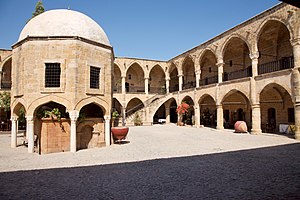
By car [ edit ]
A car is by far the best way to travel around Northern Cyprus. There are rental desks in Nicosia city, Ercan Airport, Kyrenia and Famagusta - best book ahead, as their fleets are small and their opening hours limited. They can arrange to pick up / drop off at Kyrenia ferry port or at Ledra Palace border crossing in Nicosia.
Check the deal with fuel, they usually rent empty-to-empty, so the first task is to find a filling station. The second task is to estimate how much fuel you might use, as there's no credit for unused fuel.
If you hire in the south, you may take the vehicle north but must buy extra insurance at the border, see above.
The highways are in good repair, well-signposted, pleasantly uncongested by western standards, and local drivers are less frenetic than on the Turkish mainland.
Hitch-hiking is usually easy along these roads.
By bus [ edit ]
Dolmuşes - minibuses - are the main public transport. They don't have a fixed timetable and set off whenever full, but reckon on runs between Nicosia and Kyrenia every 30 minutes, and between other towns hourly. They're designed for locals not tourists and become very sparse by early evening. Some sights (such as St Hilarion) are several km from a dolmuş route, and the east peninsula beyond İskele and the west end beyond Lefke have infrequent services.
By taxi [ edit ]
There are many taxi ranks, but you won't see many taxis around to wave down, so make sure to get some numbers. Taxis wait at the airport, and at Ledra Palace and Kermiya crossings. A trip from Nicosia to Kyrenia in 2024 is about €60.
See [ edit ]

- Kyrenia is dominated by its castle; the museum within displays a shipwreck from 4th century BC. The harbour is an attractive area for strolling, bathed in golden light at evening.
- Bellapais Abbey near Kyrenia is a scenic ruin with great Gothic arches and towering stone walls.
- Castles: in the Beşparmak Mountains are St Hilarion Castle (above Kyrenia), Buffavento and Kantara Castle (towards Karpaz).
- Walled City of Nicosia: the walls were built in 1567 are are mostly intact, though bisected by the north / south border. Until the 19th century they defined city limits and contain Selimiye Mosque and Büyük Han or Great Inn. A short walk beyond are Samanbahçe quarter, Büyük Hamam the ancient baths, and Bandabulya bazaar.
- Walled City of Famagusta sights include Lala Mustafa Pasha Mosque, the walls themselves, and Othello Tower, where the Cypriot section of Shakespeare's play Othello is set.
- Salamis is the ruin of a Roman city north of Famagusta, with statues, agoras, and an amphitheatre.
- Karpaz to the northeast is festooned with wild donkeys. Apostolos Andreas Monastery is an ancient pilgrimage site.
Do [ edit ]
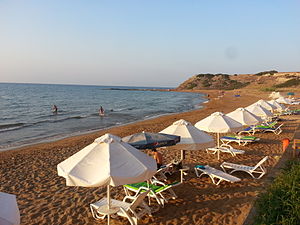
- Beaches are a major part of the appeal of Northern Cyprus. The north coast has the best, clean and sandy, on the long resort strip either side of Kyrenia. Some are private to hotels. Karpaz Peninsula has equally good beaches, much quieter, for instance near Dikarpaz. West coast has a beach strip north of Famagusta. South of Famagusta is blighted by the border, with Varosha a strange ghost town.
- Casinos: gambling is legal in Northern Cyprus but not in mainland Turkey or the Republic of Cyprus, so these attract a louche crowd. Every upscale hotel has a casino, dress smart. Organised crime has its tentacles all over them, for money-laundering, prostitution and other rackets.
- Nightlife other than gambling and paid-for sex is a tourist thing not a local habit. In the beach resort strips of Kyrenia and Famagusta, you can bop away like it was Paphos, but Nicosia is strangely quiet for a capital.
- Scuba diving : this is the Med, so adjust your expectations. First, it's seasonal, the Med is cold in winter and dive shacks close up. Most coral was stripped out years ago and the waters over-fished, so marine life is encountered (such as the loggerhead turtle Caretta caretta ) but is not as abundant as the Red Sea. However the lack of river run-off means clear waters, and the limestone scenery catches the sunlight. This makes Northern Cyprus a good destination for novice training and low-experience divers; rufty-tufty old salts will be content with a day or two diving then head off to explore the landward sights. Kyrenia beach strip has most of the dive operators.
- Other sports such as windsurfing, jet-skiing, water-skiing, sailing and paragliding are likewise based around Kyrenia.
- Boat tours putter out from all the main harbours.
- Hiking and trekking are best in the Kyrenia mountains.
- Northern Cyprus Music Festival is held at Bellapais Monastery near Kyrenia mid-Sept to early November.
Buy [ edit ]
Money [ edit ].
The Turkish lira is the official currency in Northern Cyprus, one and the same as the mainland lira, denoted as TL (ISO code TRY). That means that Northern Cyprus suffers the same hyper-inflation as the mainland, about 50% per annum, so exchange rates and prices quoted on these pages go out of date quickly. Don't exchange until you get here, and don't leave with a wad unspent. Euros, UK pounds and credit cards are accepted by all but the smallest businesses. These may even quote prices in or insist on euros to counter inflation.
Lira banknotes are 5, 10, 20, 50, 100 and 200 TL, see Turkey#Money for specimens. You need the E9 series from 2009, previous issues are no longer valid. You might encounter coins of 1 TL or less, worth next-to-nothing. One lira is divided into 100 kuruş , an amount you could barely see with a microscope.
Exchange desks are honest, and the standard scams are unheard of.
Shopping [ edit ]
- AVM means a shopping centre, AlışVeriş Merkezi , and these are found in the main towns along with convenience stores. TRNC doesn't have big western-style supermarkets.
- Tourist souvenirs are likewise sold in the main towns. The cuter the surroundings the higher the price, so Büyük Han the Great Inn of Nicosia costs most.
Property [ edit ]
Northern Cyprus property is low cost compared to the Republic of Cyprus, but you're going to need a good lawyer. The long list of pitfalls in buying property in the south also applies to the north, and is compounded by the problem of title. Thousands of Cypriots driven out in the war of 1974 still hold titles to their land, which courts may enforce over later purchasers.
The landmark case was Apostolides v Orams 2009. Apostolides and his family fled in 1974 from Laptos, nowadays Lapta on Kyrenia resort strip. It was only with the easing of border restrictions in 2003 that they were able to return, to find a villa built there by David and Linda Orams from England, who'd bought the land in good faith from a local agent. Apostolides sued in the Cypriot courts but their judgement was not enforceable in the north, so the case bounced around the British and European courts before a definitive ruling in Apostolides' favour by the European Court of Justice. It was a pyrrhic victory, as the Orams abandoned the property and Apostolides got nothing out of it, but the lawyers still got paid plenty.
So a wave of further cases never materialised. The European Court of Human Rights ruled in 2013 and 2015 that though TRNC was not recognised, it did have de facto an independent judiciary and legal system, and that future disputes should be heard there, specifically by the Immovable Property Commission. That body is more likely than a southern court to rule that those who've paid money for land in the north also have enforceable rights.
Eat [ edit ]

Most Northern Cypriot cuisine will be familiar if you've eaten Turkish, Greek and Middle Eastern fare back home. Dishes you might not find elsewhere are Molehiya, Enginar Dolması, Kolokas, Bullez, Çiçek Dolması, Magarina-Bulli, Pilav, Bulgur Köftesi, Mucendra, Hummus Çorbası, Hellimli and Pirohu.
- Halloumi is known as hellim in Turkish. It can be grilled without melting so it features in many dishes, such as hellimli cake, hellim böreği a pastry, and pirohu the traditional Turkish meal of mantı with hellim instead of meat.
- Şeftali Kebabı is made from lamb.
- Fırın Kebabı is the Turkish equivalent of kleftiko, a kebab of lamb and Cypriot potatoes.
- Magarına Bulli is pasta with chicken, and hellim sprinkled all over it. Best is hand-made pasta, el magarınası or yahnili magarına.
- Çakısdez (pronounced chuck-ess-dez) are green olives, hand-crushed using special stones, and flavored with garlic.
- Samarella is sun-dried meat, traditionally goat.
Turkish Cypriots like their desserts:
- Pekmez is a thick syrup of carob juice, from the carob trees of the Pentadaktylos mountains, made into gloochy desserts such as gullurikya.
- Nor böreği is a pastry with cinnamon, sugar and "nor", a cheese particular to Cyprus.
- Sini gatmeri is an almond filo whirl, and sac (say "sach") gatmeri is a light pastry of sugar and dough.
- Ekmek Kadayıfı is soft dough filled with nor cheese and sweet syrup, try it with vanilla ice-cream.
- Macun are preserved fruits, such as ceviz (walnut) macunu.
European-style food can be found wherever there are large tourist populations, so Kyrenia has the best selection, and supermarkets have supplies for self-catering.
Drink [ edit ]

- Rakı is the national drink, as in mainland Turkey. It's an aniseed-flavoured spirit similar to Greek ouzo , drunk mixed with water (which turns it cloudy) in a long glass, as an aperitif or alongside a meal.
- Brandy from Cyprus is sweeter than from the mainland, from its double distillation of white wines and aging in oak barrels. Most production is around Limassol in the south but TRNC has a couple of distilleries. To offset the sweetness it's often drunk as Brandy Sour, mixing in the squash of local lemons.
- Zivania is also described as brandy but is more like grappa or marc , a colourless sugarless distillate from wine grape pressings. Drink it neat as an aperitif. It's unique to Cyprus, and in the south is EU-protected as a name of origin, with a maximum 60% strength. Inevitably TRNC has set up its own trade protection system, which even Turkey doesn't recognise, and you may find higher-strength products better used for lighting the barbecue or treating a nasty sore on your cat's backside.
- Wine producers include Aphrodite and Kantara, but most wine is imported from the Turkish mainland. There's a mixture of grape varietals and no system equivalent to AOC, but it's perfectly good enough for chasing down a kebab.
- Beer is the usual Turkish brands - Efes is the commonest. International imports are found in the resort strips, where you're seldom far from an Irish pub.
- Non-alcoholic drinks include ayran the Turkish classic yogurt, fresh squeezed orange juice, Turkish coffee; and the tap-water is safe to drink though "flat" from desalination.
Sleep [ edit ]
Accommodation in Northern Cyprus is plentiful. A 40 km resort strip is centred on Kyrenia, aimed at western holiday makers; supply exceeds demand and there are some excellent package deals. Famagusta has a smaller strip but hasn't attracted western tourism. Nicosia has surprisingly little for a capital city. Karpaz at the east end and Güzelyurt in the west have few hotels and accommodation is in small pansiyons . Inspect their rooms thoroughly before checking in and be prepared to hold your nose.
Learn [ edit ]

Northern Cyprus has five universities, all private.
- Near East University (Yakın Doğu Üniversitesi)
- Eastern Mediterranean University (Doğu Akdeniz Üniversitesi)
- Cyprus International University (Uluslararası Kıbrıs Üniversitesi)
- European University of Lefke (Lefke Avrupa Üniversitesi)
- Girne American University (Girne Amerikan Üniversitesi)
There's also a campus of Middle East Technical University at Güzelyurt, and of Istanbul Technical University at Famagusta.
Work [ edit ]
Working is forbidden to anybody not in possession of a permit, which unlikely to be granted to non-Turkish visitors.
Cope [ edit ]
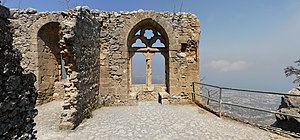
Electricity is 240 volt AC, and plugs and sockets are 3-pin rectangular, same as the UK. Power cuts are fairly frequent, and voltage glitches may damage electronics.
Laundromats are found in the three cities.
Embassies are in south Nicosia, since they don't recognise the north, and have limited ability to assist you here.
Stay healthy [ edit ]
- Health care here is private so adequate health insurance is essential. An annual policy is often the best deal; check that coverage includes TRNC not just the EU.
- TRNC has lots of doctors familiar with the ailments of elderly westerners. Your accommodation will know who's reliable and who's out to fleece you.
- Take enough of your usual medication and some spare but not too much, including paraphernalia such as injecting kit for diabetes. Take also the prescriptions to prove it's legit and for your sole use.
Stay safe [ edit ]

Northern Cyprus is safe, take usual care of valuables, and watch out for traffic (which drives on the left). In the water, beware mad bats on jet skis.
Central Nicosia attracts a seedy crowd, though pickpocketing, assault and sexual assault remain uncommon by western standards.
Don't lark about on the border fence or use unauthorised crossings. The guards will assume you're making a recce for smuggling or human trafficking.
Respect [ edit ]
99% of Turkish Cypriots are nominally Sunni Muslims , but secular. Only a pious elderly minority routinely attend a mosque, and it's rare to see women in veils. The majority are like westerners: religion is confined to rights-of-passage around birth, marriage and death, and plays no role in daily life, yet mightily offended they would be if you mocked their religion or its rites and observances. However they're equally sensitive on symbols of the state, such as the flag or imagery of Kemal Atatürk. Disrespecting these puts you in harm's way, and doing so on the mainland could get you jailed.
The Greek-Turkish violence of 1963 to 1974 and subsequent partition are still a raw memory. Don't bring the subject up, but if it arises, express sympathetic interest; it's their experience that counts, not your opinion.
LGBTQ+ travelers should be comfortable especially in the Kyrenia tourist strip, where hotels are vying for their trade. Homosexuality was legalized in 2009, but same-sex relationships are not recognized by the government. Open displays of same-sex affection will draw stares, maybe cat-calling to the same extent as for lightly-dressed hetero women, but not violence.
Connect [ edit ]
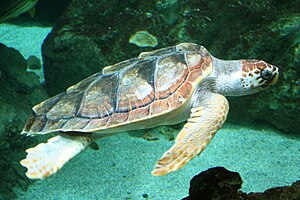
Northern Cyprus uses Turkish area code 392. When dialling from Turkey, Northern Cyprus or the Republic of Cyprus, the dialling format is 0 392 xxx xxxx and the call is charged as domestic. From any other country the format is +90 392 xxx xxxx and it's charged as international.
The mobile networks are KKTC Turkcell and KKTC Telsim (Vodafone). They have 4G coverage of most of the north - it's a small place so you're seldom far from a relay mast. As of 2024, 5G has not reached the north. Wifi is widely available in public places.
Calling on a non-local mobile phone incurs international rates, consider buying a local SIM card. However the north operators may permit roaming in the south, and vice versa , check their deals. Nicosia North old city is within range of the southern networks, but elsewhere the "buffer zone" is too broad for cross-over.
Go next [ edit ]
- Nicosia South has plenty to see and you just stroll across the border at Ledra Street.
- The rest of southern Cyprus has lots of historic sites, museums, and lively beach resorts such as Paphos .
- Mainland Turkey is easily reached by flights to Istanbul or ferries to its Mediterranean coast.
- Has custom banner
- Has mapframe
- Maps with non-default size
- Has map markers
- Quickbar with missing information
- Has Geo parameter
- All destination articles
- Usable countries
- Usable articles
- Country articles
- Pages with maps
Navigation menu

Top Things To Do In North Cyprus & Where To Stay
Many people probably don’t know, but there are many cool things to do in North Cyprus . While most people are familiar with the island of Cyprus, few are acquainted with its northern part. The small country of North Cyprus, which is only recognised by Turkey, has several interesting places to visit, which I’m going to share with you here.
Table of Contents
A Brief Background Info On North Cyprus
The Republic of Cyprus got its independence from the United Kingdom in 1960. Historically, the country always had its share of Greek-speaking (the majority) and Turkish-speaking inhabitants. These two groups used to live all around the island.
But when there was an attempt to annex Cyprus to the Greek territory in 1974, Turkey invaded the island. As a result, both ethnic groups were separated and the Turkish Cypriots migrated to the northern part of the island. The Greek Cypriots who lived in that area moved to the south of the border.
Up until today, the capital Nicosia is split into two separate areas. It is the only capital in the world that is divided and separated by a military zone. In other words, Greek and Turkish Cypriots don’t mingle. The Turkish Republic of North Cyprus is not recognised by the UN – as I mentioned, only Turkey itself recognises it as an independent country.
Here you will learn about the main North Cyprus attractions. But if you want to visit the rest of the island, this Cyprus travel guide will help you.
What’s The North Cyprus Currency?
With such a small territory and the lack of international recognition, North Cyprus doesn’t have enough reserve and overall capacity to have their own currency. The North Cyprus currency is the Turkish lira.
However, after the huge devaluation of the Turkish lira in recent years, it is possible to use euros, US dollars and British pounds in many places. The country has suffered so much with the results of the economic problems in Turkey that the president has even considered changing the North Cyprus currency to the euro (the same used in the southern part) or the US dollar.
Things To Do In North Cyprus
Despite its small territory, there are quite a few things to do in North Cyprus. These are the highlights, the places you shouldn’t miss.
Visit Nicosia, The Divided Capital
The capital of Cyprus, Nicosia, is a very interesting place. The city is the only world capital that is split between two countries (in a similar fashion as Berlin during the communist times). The southern part is in the Republic of Cyprus, while the northern part is in the Turkish Republic of North Cyprus. The south is more prosperous, the north is a bit behind.

In North Nicosia, you really feel that you are in another country – Turkey, perhaps. The border area is guarded by police officers and the UN is in control of the “no man’s land” between both nations.
To cross from south to north, you must show your passport twice, once to each “border” control. During the summer months, there is usually a line. Apart from the thrill of crossing one of the most unique borders in the world, you will be able to visit a few mosques, old caravansary and see many street art murals in North Nicosia.
Among other things to see in North Nicosia, I recommend sticking to the old quarter . Girne Gate , one of the three gates that led into the old Venetian forts is another highlight. In 1821, the gate was restored by the Ottomans and a dome was added to it.
Mevlevi Tekke , a museum with 16 tombs of noble Mevlevis, is another historic monument worth a visit, located just south of Girne Gate. It is believed that the Dervishes Mevlevi arrived during Cyprus with the Ottoman conquer.

Another place to visit in Nicosia is the Great Khan , kind of a caravanserai (old market and hotel) located only 1km from the border. Built in the 15th Century, the Khan is considered one of the best examples of old Ottoman architecture in Cyprus. On the ground floor, there are several rooms that were used for trade, while the bedrooms are located on the upper floor. Today, it is a place for entertainment, exhibitions and has several restaurants.

Lala Mustafa Pasha Mosque

This building located in Gazimagusa (Famagusta), was built in the 14th century as a Gothic church by the Lusignan people. When the Ottomans arrived, it was turned into a mosque. When the construction of the church started, in 1298, an African fig tree was planted by the entrance. Today, the tree is still there and it adds a lot of character and beauty to the (today) mosque.
Bellapais Abbey
Among the places to visit in North Cyprus, you should also include Bellapais Abbey. Built in the Gothic style, it is at the foot of the Besparmak mountains. British author Lawrence Durell lived here in the mid-20th century and this is where he wrote Bitter Lemons. In the book, he mentions the beauty of the abbey several times. The house where he lived is now open to visitors.
Bufavento Castle
As you can see, you’re not short of things to do in North Cyprus. Bufavento Castle is located on the Besparmak mountains and it is the tallest of three castles in the area. Climb up to the castle is not an easy task, but you will be rewarded with some amazing views.
St Barnabas Monastery

This is a beautiful Christian orthodox monastery built in honour of a saint that came from a Jewish family. History says that a young Barnabas moved to Jerusalem to study and converted into Christianity. After that, he returned to Cyprus and preached the Gospel together with St Paul. Today, the monastery is a museum and it has a church, a beautiful courtyard, sleeping quarters and a chapel where the body of St Barnabas was buried.
The Golden Beach
Sunbathing at the Golden Beach is among the things to do in North Cyprus – after all, this is a Mediterranean island! This 2km-long sandy beach is located on the Karpaz peninsula and you will most likely have it all for yourself. There is hardly any infrastructure, so you can swim in peace and enjoy the beautiful views.
Girne Castle (Kyrenia Castle)

Girne Castle is one of the most impressive monuments in all of Cyprus and is the most important landmark in Girne Town (known in Greek as Kyrenia). The original building was very different from what we see today, which is a result of many renovations over the centuries. In the castle, there is a shipwreck as part of the permanent exhibition. It is believed that the ship was built in the 3rd century BC, so it is the oldest commercial vessel ever recovered from the bottom of the sea.
The Ancient City of Salamis
Another great place to visit in North Cyprus is the ancient city of Salamis, founded by Tefkros in the bronze age. It is located close to the present-day city of Famagusta (Gazimagusa). These Roman ruins were discovered during excavations between 1952 and 1974 and are among the most popular tourist attractions in Cyprus.
Flights To North Cyprus
I would say that, unless you’re Turkish, 99% of tourists get to North Cyprus via the Nicosia border control. Most people fly into Larnaca airport, 51km (31.6 miles) or Paphos, in the very south of the island.
It is also possible to arrive by plane directly. Flights to North Cyprus arrive at Ercan airport (pronounced erjan ). The only North Cyprus airport is located 31km (19 miles) from Nicosia and 49km (31 miles) from Gazimagusa, on the coast. All flights to North Cyprus have a connection in Turkey and the route is with either Turkish Airlines, Pegasus or Atlas Global (all based in Istanbul ).
Tip: If you want to travel to North Cyprus, I highly recommend you fly into Larnaca or Paphos airports, located in the Greek part of the island. Since North Cyprus is only recognised by Turkey, when you fly to Ercan airport, it will be considered you entered the country illegally. When leaving Cyprus (via Larnaca) the immigration officer asked where I flew into. When I arrived in Lebanon (another country, not in the EU) the arrival form asks if you “entered Cyprus by a non-recognised entry port”.

Where To Stay In North Cyprus: Hotels & Apartments
If you’re thinking about where to stay in North Cyprus, chances are you plan to stay somewhere around the coast. Here I have a selection of the best North Cyprus hotels and rentals, with options for every budget.
North Nicosia : There are many guest houses and basic accommodation in North Nicosia, but here I have selected some of the best North Nicosia hotels and vacation rentals. Let’s start with Merit Lefkosa Hotel & Casino , a 5-star property and one of the best North Cyprus hotels. It has beautiful gardens indoor and outdoor pools, a casino and a spa. Sky Roof Hotel is located in the city centre and has a rooftop pool with city views, modern rooms and rated 8.8 by Booking.com guests. G Suites offers modern apartments, a good location and very attractive prices.
HOTEL DEALS ON BOOKING.COM HOTEL DEALS ON EXPEDIA
Gazimağusa (Famagusta) : There are many things to do in this coastal city, more widely known by the name of Famagusta. Premium Inn is a boutique hotel rated 9.1/10 on Booking.com, with modern rooms and 1 mile from the city centre. The hotel has a bar and offers continental breakfast with all reservations. Mystery Garden Guest House is another good option, rated 8.8 by previous guests and with a traditional, homely feel to it. Caesar Resort is 15km (9.4 miles) from Famagusta city centre and offers a large outdoor swimming pool, bars, an indoor pool, casino and waterslides.
Pedro has travelled to almost 120 countries and has made his nest in London. He has also lived in Spain, Australia, the US, Georgia and Turkey. A former hotel management professional, he loves exploring local cultures, is now learning his 8th language and has a soft spot for the Middle East and the CIS countries.
25 Things To Do In North Cyprus
Our family holiday in North Cyprus was a week of lounging by the pool in the sun, exploring mountaintop castles, photographing beautiful ruins and eating lots of meat.
1. Sunbathe by the pool.
Wherever you’re staying in North Cyprus, you can’t possibly survive without a swimming pool! Temperatures in May range between 26 to 37 degrees, and peak just after lunch, so you’d better make sure you have an easy way of cooling down.
We stayed at Villa Kibar where we were lucky to have a wonderful pool and lots of loungers and even a couple of hammocks. Bliss.

2. Visit Bellapais Abbey.
The ruined monastery in Bellapais is a must-see. At 220m above sea level on the side of the Kyrenia mountains, it has a spectacular view over the surrounding villages and out to the Mediterranean. Bellapais itself is a small charming village with a few cafes, restaurants and boutiques, but the abbey is definitely the main attraction.

Much of the main roof of the monastery has gone (although the chapel still operates as a concert venue and hosts the annual music festival), leaving the cloister and dormitories open to the sky.

The beautiful stone archways around the cloister amazingly still stand, and are certainly one of the main draws for sightseers.

The cellars of the abbey have been repurposed as a photography exhibition hall for local Cypriot artists, and the rest of the monastery is regularly hired out as a wedding venue.
Walking tours are available from the ticket office so you can learn all about the abbey from a tour guide, or you can explore solo to really appreciate the serenity of the ruins.

3. Order a brandy sour.
When we asked our villa host what local drinks we should try, she immediately recommended brand sours. A refreshing and fizzy combo of brandy, bitters, and lemonade or soda water, these cocktails are very easy to drink on a hot day, so watch yourself!

4. Enjoy the view at Kybele Restaurant & Bar.

In the grounds of Bellapais Abbey you’ll find Kybele Restaurant & Bar, a sprawling dining spot that really makes the most of its 220m vantage point.

Make sure you book to get the best spot, especially if you’re a large group or coming for drinks in the evening. The restaurant has all the local dishes as well as international cuisine, but the real highlight is definitely the view.

5. Find a turtle nest at Alagadi Beach.
I’ll be honest, we weren’t bowled over by the beaches we found around Kyrenia. The area is very built up and geared towards Turkish holidaymakers who come to the island for one thing – gambling. This means most beaches have been commandeered and commercialised by gargantuan beach resort casinos. One of the only beaches left untouched is the sprawling untamed stretch of Alagadi, a protected area where turtles lay their eggs. Nearby is a conservation centre where students work to support the turtles and protect their eggs, so you don’t need to worry about disturbing the nests.

We spent a few hours here one afternoon on our trip, swimming in the extremely warm sea and drying off in the sun. There are no conveniences or places to buy drinks or food, so a few hours is the perfect amount of time before leaving to grab an ice cream at Mardo’s Cafe on the main strip.
6. Have a plate of mixed kebab.
Can’t decide between chicken kebab, lamb chops, Turkish meatballs, or lamb kebab? You don’t have to! Taste a bit of everything with a plate of mixed kebab, available on most menus and usually served with rice and veg.

7. Watch the sunset.
There’s something about Cyprus that gives you the most spectacular sunsets. As it hits the horizon over the sea the sun bursts into a red glow, reflecting on the clouds around it and casting purple shadows into the sky.

8. Walk around Kyrenia Harbour.
Kyrenia is said to have been founded in the 10th century BC! Historically the buildings around the harbour would have been Venetian homes and carob warehouses, and the architecture has been wisely preserved by the local businesses who have set up shop to make the most of rising tourism. Nowadays the harbour is full of restaurants and bars, and bristling with the masts of sailing boas and yachts.

9. Refresh with some homemade lemonade.
Most of the restaurants, cafes and bars in Cyprus serve homemade lemonade, with freshly squeezed lemon, shredded mint, lots of ice, and usually a fancy straw to top it off. It’s the perfect refreshing drink on a hot Mediterranean day.

One of the best homemade lemonades we had was at the 6 Brothers Cafe Bar , on the corner of Kyrenia Harbour. The rooftop terrace gives amazing views of the sea and harbour too.
10. See the shipwreck museum at Kyrenia Castle.
Excavations in Kyrenia Castle have suggested it could date as far back at the 7th century BC. It has Roman, Byzantine, Venetian, and Ottoman elements and was used by both British and Greek Cypriot armies for military purposes.

It has four corner towers you can climb, an exhibition hall, a natural underground reservoir, dungeons, and a Byzantine church, as well as a museum on the neolithic village of Vrysi which was discovered near the city, and a shipwreck museum displaying he remains of an ancient ship and its cargo.

Amazingly, the cargo of this ship include things like whole almonds still in their shells, olive stones, pottery, sailing equipment and amphorae of wine, which the ship would have been trading. They also found a note preserved on board with symbols inscribed, cursing the ship to sink!
Before you go, make sure you climb to the top of the castle for an amazing view back over the harbour.

11. Enjoy some traditional Turkish mezze.
One of my main priorities on holidays is trying genuine traditional local foods, and it’s easy to do this in North Cyprus. The stars of the mezze show include the freshly baked breads, houmous, tzatziki, roast aubergine in tomato sauce, turkish meatballs, egg fried potatoes, stuffed vines, and grilled halloumi cheese.

On your day in Kyrenia I really recommend you try all of these from the menu at Kıbrıs Evi , which is helpfully placed right at the entrance to the castle and has amazing views over the harbour.

12. Play golf at Korineum Golf Resort.
If the Whiteheads were to rank their holiday destination priorities, golf would be right at the top with nice weather. The dads golf without fail wherever they find themselves. Luckily for them the choice really paid off this year – playing at Korineum Golf Resort near Kyrenia was one of their trip highlights.

13. Grill some fresh fish from the Cypriot Sea.
Another thing we asked our villa host was the best fish to eat. Being surrounded by water, Cyprus is a great place to enjoy fresh fish and seafood. It’s worth knowing what fish are seasonal too, she warned us off seabass as it would be farmed rather than fresh at that time of year, and instead recommended red mullet.

14. Rent a jeep and cross the Kyrenia mountains.
You can’t get around Cyprus without a car. Our villa host arranged our car rentals for us through a local company that dropped three jeeps off at our villa.

There’s nothing like driving over the Kyrenia mountains in an open top jeep and seeing the landscape spread out before you for miles around. There’s also nothing like being caught in a storm in a car that has no back windows.

15. Try some traditional Cypriot bread and baklava from Petek Patisserie.

Petek Patisserie is a great place to eat on a day trip to Famagusta, with a welcoming interior and delicious fresh baked bread. Make sure you don’t leave without trying some of the gooey-est, sweetest baklava of your whole life.

16. Walk the Venetian Walls around the old city of Famagusta.
Famagusta (also known as Gazimağusa ) is an old port town on the east coast, and was the key trading point of Medieval and Ottoman Cyprus. The old city is surrounded by Venetian Walls and jam packed with ruins.

17. Admire the Lala Mustafa Paşa Camii and Venetian Palace ruins.
Those ruins I mentioned? The largest of them all, towering over the other buildings in the city, is the St Sophia Mosque. Originally St Nicholas Cathedral during Venetian rule, the towers and roof of the structure was badly damaged when the Ottomans invaded, and they turned it into a mosque without reconstructing, leaving this totally unique building.

The Venetian Palazzo del Provveditore was built by the Lusignan Kings of Cyprus and later used as a governors palace. Only the grand facade and back courtyard remain.

Another remaining area of the palace is the Namık Kemal Dungeon, which housed the revolutionary playwright Namık Kemal in the late 19th century.

18. See the ghost town of Varosha from Palm Beach.
Athough it seems odd to be calling it a tourist attraction, you can’t go to Famagusta without seeing the ghost town of Varosha. Although the town itself is fenced off and tightly restricted by Turkish military, you can see the bombed out shells of hotels, left from the Turkish invasion of 1974, from Palm Beach.
Read more about Varosha in my previous post .

19. Explore the excavated Greco-Roman ruins at Salamis.
The excavations at Salamis reveal a long standing city that dates back as early as 1075 BC. Legend has it that it was founded by Teucer, who could not return home after the Trojan war because he had failed to avenge his brother Ajax.

Located on the east coast just north of Famagusta (then called Arsinoe), Salamis was an important trading centre throughout ancient history, first under the Persian Empire, then Hellenistic, Roman, and Byzantine, before a series of natural disasters and pirate raids brought its end.
Excavations on the site started in the 19th century and continued through to the 1970s, when they were interrupted by the Turkish invasion.

The site includes a massive gymnasium, surrounded by columns an used as an exercise ground, as well as swimming pools and baths with cold rooms and saunas. The other main feature is the amphitheatre, with 50 rows of seats that could have fit 15,000 audience members.

There’s also a Roman villa, two basilicas, forum, temple and reservoir, although these are a considerable walk away from the main site and aren’t in as good a condition as the baths and theatre.
20. Go to Saint Barnabas Monastery and Archeological museum.
All the artifacts excavated from Salamis are either in the British Museum or displayed in the Archaeological museum at St Barnabas Monastery, which in itself is a gorgeous 18th century church worth driving only 10 minutes up the road to see.

21. Go on a snorkeling boat trip.
One of everyone’s favourite activities from our trip was the morning boat trip from Kyrenia. On a recommendation from our villa host (we have so much to thank her for), we used Scuba Cyprus , who took a group of us out and found the best spots for snorkeling and diving.

22. Grab a doner kebab.
Nothing makes you hungry like swimming! Our snorkelling group stopped at West End Burger & Kebab house and enjoyed some satisfyingly meaty kebabs.

23. Take panoramic photos from St Hilarion Castle.
Us non-snorkelers of the family went on a little drive to St Hilarion Castle, described in the flyers they handed us as “the main castle in Cyprus and one with the most impressive architecture”. It was one of a series of castles built to protect the Cypriot public from attacks by sea, and is also mentioned in written accounts of King Richard’s invasion in 1191.

The main legend of the castle seems to be of Prince John of Antiochbrother of King Peter I of Cyprus, who lived in the castle with his family to stay protected from the Genoese. He was manipulated by Queen Eleanor into believing that his soldiers were secretly plotting against him, so he called them one by one to the tallest tower and threw them to their deaths.

Historical tragedies aside, the castle really does have some fabulous views, and the walls draped over the mountainside are great fun to climb. (YES MATT OK IT WAS FUN)

24. Enjoy a steak at the Veranda.
Say it with me – we asked our villa host for restaurant recommendations, and her number one suggestion was The Veranda near Kyrenia. We were not disappointed. This charming little restaurant sits idyllically on the edge of the water, with leafy plants hanging overhead as you eat your meal by candlelight.

The catch of the day comes highly recommended, but if you like meat then you must order the rib eye steak, which was perfectly salted and mouthwateringly tender.
25. Take some of North Cyprus home with you.
There are places to buy souvenirs everywhere of course, but we especially enjoyed the pottery on sale in Bellapais. Matt and I bought a little handpainted bowl, while my sister bought a big serving platter.

Other places to visit
If we’d stayed any longer than a week I would definitely want to go to Nicosia. The capital city of Cyprus, Nicosia is split horizontally by the border and circled by old Venetian walls. In the north of the city you can visit the Büyük Han (a 16th century courtyard with boutique shops and cafes), Selimiye Camii (a 13th century gothic church, now mosque), and Belediye Pazarı (old market and bazaar). The south is more modern, with a few museums and galleries. On my list to visit there was Faneromeni Church, the Archbishop’s Palace, Agios Ionannis Cathedral and Famagusta Gate.
- Kantara Castle
This was highly recommended by the Lonely Planet guide for North Cyprus. Situated between Hilarion Castle and Buffavento Castle, with a similar panoramic view of the surrounding country side and penisula, it was used to pass signals between the two. The castle has 101 rooms, and legend has it that once you’ve found the final one you will enter paradise.
Where to stay
We thoroughly enjoyed our stay at Villa Kibar in Ozanköy, just a short walk from Bellapais and a short drive from Kyrenia. And as I’ve said again and again, our villa host had many useful tips and recommendations.

This large villa was perfect for our big family, with many bathrooms, a beautiful spacious kitchen and many outdoor seating areas to eat, sunbathe and relax as a group.
The roof was one of our favourite areas, especially at sunset, with total panoramic views over the surrounding villages, up to the Kyrenia mountains and out to the Mediterranean.

I’ll say it now, North Cyprus was not what we were expecting. The huge casinos and commercial beach resorts definitely had us worried when we first arrived, but after following the trusty recommendations from our villa host and some other tips from travel blogs, we ended up having a fab week exploring our corner of the island and learning about its fascinating history.
Click to pin it!

I’m Sophie, a writer and blogger living in St Albans, traveling, eating, and telling you all about it.
Find me on: Web | Instagram | Facebook
You may also enjoy:
A long weekend in sheringham, norfolk, where to take your family in devon, a winter weekend in tenby, corfe castle 4 day itinerary.
Thanks for this info
Leave a Reply Cancel reply
Get email updates.
Enter your email address to get updated when I write new posts!
Email Address
WHERE ARE WE GOING NEXT?
Follow me on bloglovin’.
259 Followers on Bloglovin'
Discover more from Wunderhead
Subscribe now to keep reading and get access to the full archive.
Type your email…
Continue reading
%20(4).png)
Welcome to Northern Cyprus!
Picturesque beaches, breathtaking attractions, and top-notch entertainment - Northern Cyprus is taking off in 2023! It's no surprise that more and more tourists are visiting the island and calling it their favorite travel destination. Come and see for yourself everything that Northern Cyprus has to offer!
Discover the Diversity of Northern Cyprus

Travel and Legal Matters

Fauna and Flora

Real Estate and Investments
The best activities in northern cyprus.
Here are some of the most popular activities in Northern Cyprus:
Beaches and Nature
Water sports.

Let yourself be inspired
Immerse yourself in the fascinating art and history of Northern Cyprus and experience a unique culture waiting to be discovered.

Explore Northern Cyprus to the Fullest
Save more and discover Northern Cyprus with our unbeatable deals and coupons!

Discover paradise in the Mediterranean: Numerous luxurious hotels await you in Northern Cyprus, and here are our top 10!
1. Kaya Palazzo Resort & Casino

The Kaya Palazzo Resort & Casino is a luxurious five-star resort located in Kyrenia, Northern Cyprus, directly on the beach. It features a large casino, several restaurants and bars, a spa area, and breathtaking views of the Mediterranean Sea. The hotel is particularly popular due to its exclusive facilities, first-class service, and elegant atmosphere.
2. Merit Park Hotel & Casino

The Merit Park Hotel & Casino is a luxurious 5-star hotel located directly by the sea in Kyrenia, Northern Cyprus. With multiple pools, a private beach, a casino, and a wellness center, as well as elegant rooms with sea views, the hotel offers top-notch accommodation and entertainment options.
3. Elexus Hotel & Resort & Spa

The Elexus Hotel & Resort & Spa is an exclusive 5-star hotel in Northern Cyprus with spectacular sea views, luxurious rooms, a private beach, a first-class spa, and a variety of top-notch restaurants and entertainment options.
4. Salamis Bay Conti Resort Hotel & Casino

The Salamis Bay Conti Resort Hotel & Casino is an impressive 5-star hotel located directly on the beach of Salamis Bay in Northern Cyprus. With a casino, pools, a spa, and first-class restaurants, it offers luxurious accommodation and a variety of leisure activities.
5. Malpas Hotel

The Malpas Hotel in Northern Cyprus is a first-class 5-star hotel located in a tranquil setting with breathtaking sea views. The hotel offers luxurious accommodation with a beautiful spa, an infinity pool, and a selection of excellent restaurants and bars. Guests can enjoy a relaxing and luxurious stay amidst a picturesque environment.
6. Cratos Premium Hotel

The Cratos Premium Hotel in Northern Cyprus is a stylish and modern 5-star hotel with impressive amenities. With a large casino, luxurious rooms and suites, and an impressive pool area, the hotel offers top-notch accommodation. Guests can experience a luxurious stay here with numerous entertainment options and a high level of comfort.
7. Kaya Artemis Resort & Casino

The Kaya Artemis Resort & Casino in Northern Cyprus is an impressive hotel that offers a blend of luxury and entertainment. With a huge pool complex, a private beach, and a casino, guests can enjoy an unforgettable experience here. The resort also offers a variety of amenities to enhance the guests' stay.
8. Acapulco Resort & Convention & Spa

The Acapulco Resort & Convention & Spa in Northern Cyprus is a large resort offering a wide range of amenities. With a large pool, a private beach, multiple restaurants, and a spa, the resort provides guests with a relaxing and luxurious stay. It is the perfect place to unwind and enjoy a variety of activities.
9. Elexus Hotel & Resort & Spa

The Elexus Hotel & Resort & Spa in Northern Cyprus is a modern and stylish hotel that offers guests a variety of amenities. With multiple restaurants and bars, a spa, and a fitness center, guests can enjoy a luxurious stay here. The hotel is a perfect place to relax and make the most of resort living.
10. Noah's Ark Deluxe Hotel & Spa

The Noah's Ark Deluxe Hotel & Spa in Northern Cyprus is a large hotel that impresses with its own water park, fitness center, and spa. Guests can enjoy a varied stay here with plenty of leisure activities and relaxation options. The hotel offers a wide range of amenities for an unforgettable vacation.
Recently Asked Questions

North Cyprus – The Must See Attractions!
North Cyprus, also known as the Turkish Republic of Northern Cyprus, is a beautiful and unique destination that offers a variety of attractions and experiences for visitors. Often a place that most visitors of Cyprus do not visit, yet it beholds treasure worthy of anyone’s attention. North Cyprus has beautiful, pristine Caribbean-like beaches with crystal-clear waters and tropical sand. Some famous beaches include Golden Beach, Escape Beach, and Alagadi Turtle Beach. It has a rich and diverse history that dates back thousands of years.
North Cyprus is also famous for its delicious cuisine, a blend of Turkish and Mediterranean flavors. Some popular dishes include lamb kebabs, stuffed vine leaves, and Turkish coffee. Northern Cyprus has a warm Mediterranean climate, with long, hot summers and mild winters. This makes it an ideal destination for year-round travel and tremendously affordable.
Additionally, North Cyprus is home to many ancient ruins and historical sites, including the ancient city of Salamis, the Kyrenia Castle, and the Bellapais Abbey. Let’s look at why you should visit North Cyprus!
This post may contain affiliate links. Please read our disclosure and privacy policy for more information.
Kyrenia Castle, North Cyprus
Kyrenia Castle is a historical castle in the city of Kyrenia, on the northern coast of Cyprus. This castle is one of the island’s most well-known landmarks. It is one of the finest examples of medieval fortification in the Mediterranean. Built by the Byzantines in the 7th century AD. The Lusignans later reinforced the castle in the 13th century. It also has a significant role in the history of Cyprus, serving as a strategic point of defense for the island against invaders. The castle underwent substantial renovations during the Ottoman era. During this time, it was converted into a military barracks. During the British colonial period, it became a prison.
In 1960, following the establishment of the Republic of Cyprus, the castle became a museum. The museum showcases a range of historical artifacts from various periods of Cypriot history. Visitors admire its impressive architecture and learn about the rich history of Cyprus. It remains an important symbol of the island’s cultural heritage and a reminder of its strategic significance throughout the centuries.
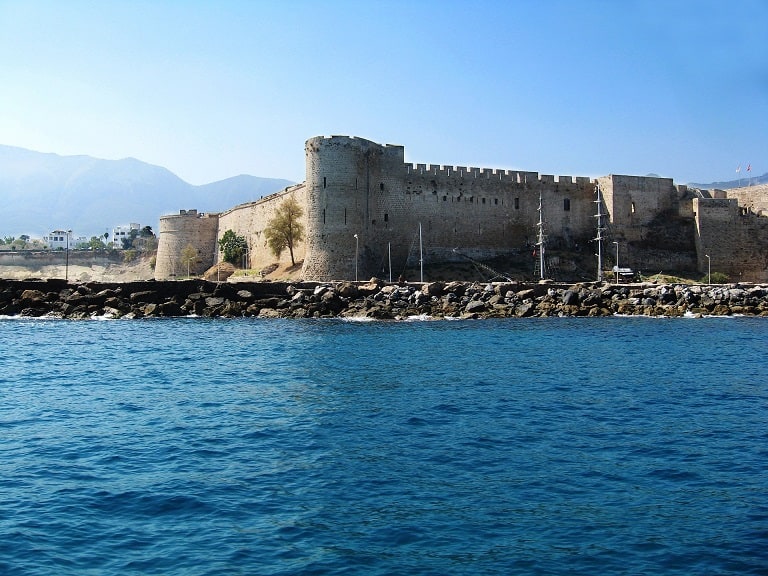
Monastery of Saint Barnabas, North Cyprus
The Monastery of Saint Barnabas is a historic Christian monastery near the city of Famagusta in Northern Cyprus. It is one of the most important religious sites on the island. Dedicated to Saint Barnabas, who is thought to be the founder of the Cypriot Orthodox Church. The monastery was built in the 4th century AD and was renovated and expanded over the centuries. Today, it is a complex of buildings that includes a church, a chapel, a library, a museum, and a gift shop.
One of the most notable features of the monastery is its impressive collection of religious icons, some of which date back to the 16th century. These icons are among the finest examples of Byzantine art in Cyprus.
The monastery is also known for its connection to Saint Barnabas. According to tradition, the saint was laid to rest on the monastery’s site after his martyrdom in Salamis in 61 AD. His tomb was rediscovered in the 5th century, and the monastery was built around it.
Visitors can tour the complex, view the religious artifacts and icons, and learn about the monastery’s history and connection to Saint Barnabas.
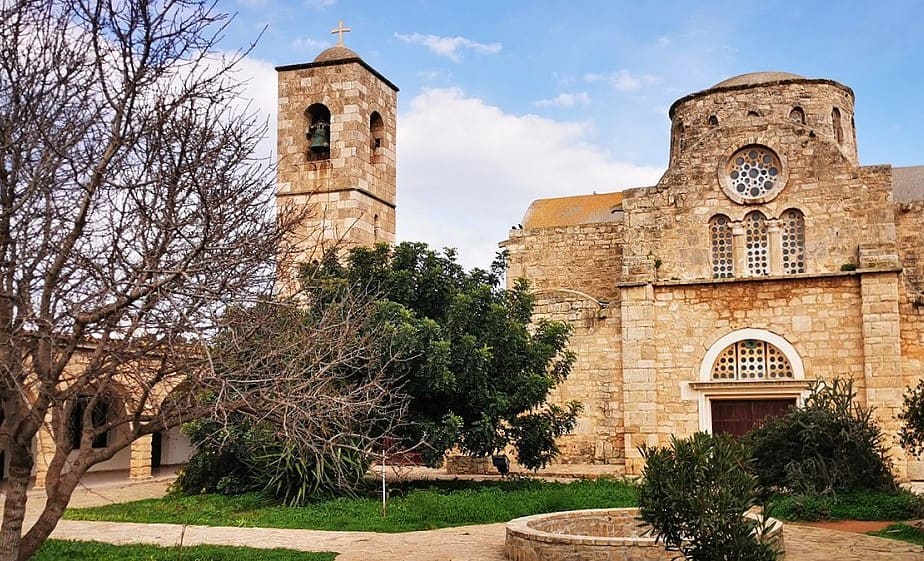
Ancient Shipwreck Museum, Northern Cyprus
The museum houses the remains of a 4th-century BC Greek merchant ship discovered in 1965 by a sponge diver. The vessel was carrying a cargo of over 400 amphorae full of with wine, olives, and almonds when it sank off the coast of Kyrenia.
The museum was established in 1976 and resides in a building once a 16th-century caravanserai. The ship’s hull and cargo, along with other artifacts found at the shipwreck site, are on display in the museum. Visitors can see the ship’s wooden hull. The hull has been preserved using polyethylene glycol (PEG) infusion, and the amphorae and other objects were found on board.
In addition, there are exhibits on the history of seafaring in the Mediterranean and the techniques used by archaeologists to excavate and preserve underwater sites. The museum’s location in Kyrenia, a city with a long maritime history, adds to its appeal. The Ancient Shipwreck Museum in North Cyprus is a fascinating destination for anyone who enjoys archaeology, history, or maritime culture.

Selimiye Mosque, North Cyprus
The Selimiye Mosque, also known as the Cathedral of St. Sophia, is a historical mosque in Nicosia, North Cyprus. It is another of the region’s most impressive examples of Ottoman architecture. The mosque was initially built as a Christian cathedral in the 13th century during the Lusignan period. It was later converted into a mosque by the Ottomans in the 16th century after they captured the island of Cyprus from the Venetians.
The Selimiye Mosque features a large central dome. The central dome gets its support from the four smaller domes and eight massive columns. The mosque’s interior contains intricate carvings and paintings and houses several beautiful stained-glass windows.
Today, the Selimiye Mosque is one of the most popular tourist attractions in North Cyprus.
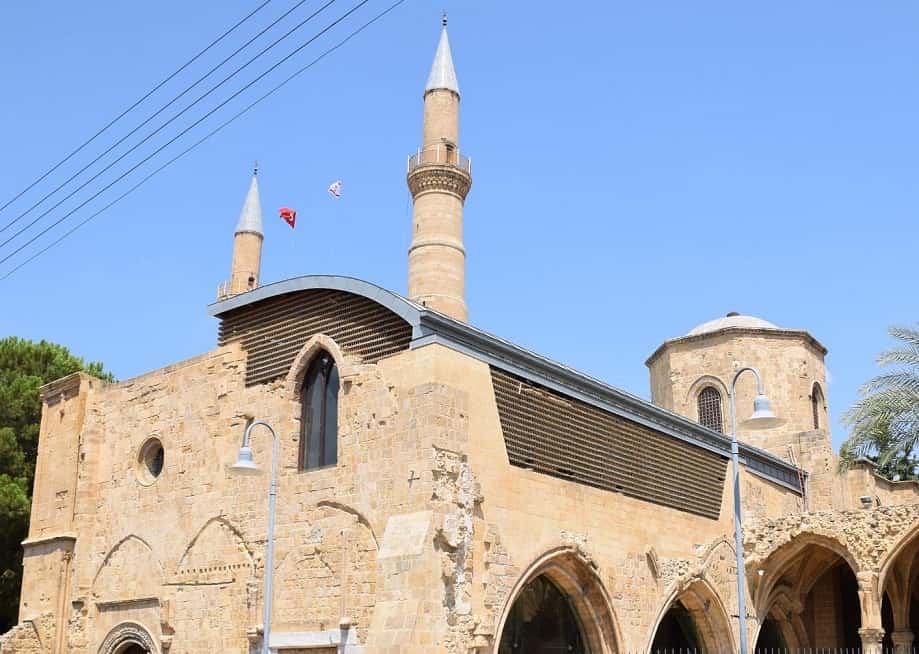
Lala Mustafa Pasha Mosque, North Cyprus
Lala Mustafa Pasha Mosque, also known as the St. Nicholas Cathedral Mosque, is a historic mosque in Famagusta. The French Lusignan dynasty built the mosque as a cathedral in the 14th century. It later became a mosque after the Ottoman Empire captured the city in 1571.
The mosque is named after Lala Mustafa Pasha, a famous Ottoman military commander who led the conquest of Famagusta. The mosque is one of the largest and most significant religious buildings in Northern Cyprus and is a masterpiece of Ottoman architecture.
The mosque’s exterior features Gothic and Ottoman architecture, with a large bell tower and minarets. The interior displays intricate tile work, marble columns, and traditional Islamic calligraphy. The mosque also houses a large courtyard and a small cemetery.
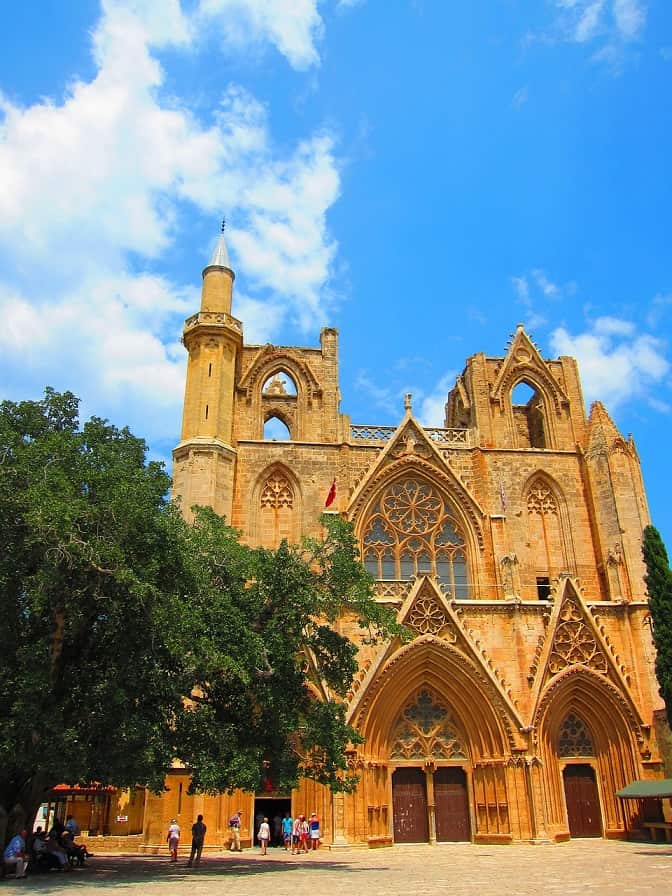
Bellapais Abbey, North Cyprus
Bellapais Abbey is a beautiful medieval monastery in the northern part of Cyprus, near the town of Kyrenia. French Augustinian monks built the monastery in the 13th century. It is one of the finest examples of Gothic architecture in the Mediterranean.
The abbey is an icon due to its stunning architecture, beautiful gardens, and breathtaking views of the surrounding countryside and the Mediterranean Sea. It is also famous for its cultural and historical significance, having been the site of numerous important events throughout Cyprus’s long and turbulent history.
Visitors can explore the abbey’s impressive cloisters and admire its intricate stonework and frescoes. And you can learn about its fascinating history through informative exhibits and tours.

Tours Of Northern Cyprus
If you are not comfortable exploring the north of Cyprus on your own. Or, if you are staying in the South of Cyprus, there are plenty of tour operators with amazing itinerates to choose from:
St. Hilarion Castle, North Cyprus
St. Hilarion Castle is a medieval castle on the Kyrenia mountain range in Northern Cyprus. It is one of the three famous castles of the Byzantines to protect the island against Arab raids. The other two castles are Kyrenia Castle and Buffavento Castle.
St. Hilarion Castle was built in the 10th century on the site of an earlier monastery to honor Saint Hilarion, a hermit monk of the area during the 4th century. The Lusignans and Venetians later expanded the castle in the 12th and 15th centuries. The castle is famous for its stunning views of the surrounding landscape. It is also known for preserving its fortifications, including towers, walls, and gates.
Visitors to St. Hilarion Castle can explore the castle’s various levels and rooms, including the Chapel of St. Hilarion, the royal apartments, and the kitchens. The castle is open to the public, with a small admission fee.

Monastery of Apostolos Varnavas, North Cyprus
The Monastery of Apostolos Varnavas is in the village of Peristerona, in the district of Nicosia, Cyprus. This monastery is an important religious site for North Cyprus that attracts many visitors and pilgrims. The name comes from St. Barnabas, one of the first Christian apostles. Historians claim that St. Barnabas brought Christianity to Cyprus in the 1st century AD.
Built in the 18th century on the ruins of an older monastery that was destroyed during the Ottoman period. As such, it has a rich history and is known for its beautiful architecture, including its bell tower and church, built in the shape of a cross. The church has beautiful frescoes and icons depicting scenes from the life of St. Barnabas.
The monastery also houses a museum showcasing many vital artifacts and religious relics, including manuscripts, icons, and vestments. One of the most important relics in the museum is the holy skull of St. Barnabas, which is kept in a special reliquary.
The Monastery of Apostolos Varnavas is an essential center of Orthodox Christianity in Cyprus. It plays a significant role in the spiritual life of the island.

Famagusta Walled City, Northern Cyprus
The Famagusta Walled City is a historic area on North Cyprus’s eastern coast. It is a fortified city built during the medieval period and was an important regional trading center. The Venetians built the city walls in the 15th century, once rulers over the island. The walls’ design protected the city from attacks by the Ottoman Turks and other enemies.
Many important historical buildings and structures are inside the city’s walls, including the Gothic-style St. Nicholas Cathedral. St. Nicholas Cathedral was built in the 14th century and served as the main church of Famagusta during the medieval period.
Other notable landmarks within the city walls include the Lala Mustafa Pasha Mosque, originally built as the Church of St. Nicholas. This church was later converted into a mosque by the Ottomans. Following this, the Venetian Palace was the residence of the Venetian governors of Cyprus.
Unfortunately, the city has been largely abandoned since the Turkish invasion of Cyprus in 1974, and many of its buildings and structures have fallen into disrepair. However, there have been efforts in recent years to restore and preserve the city’s historic landmarks.
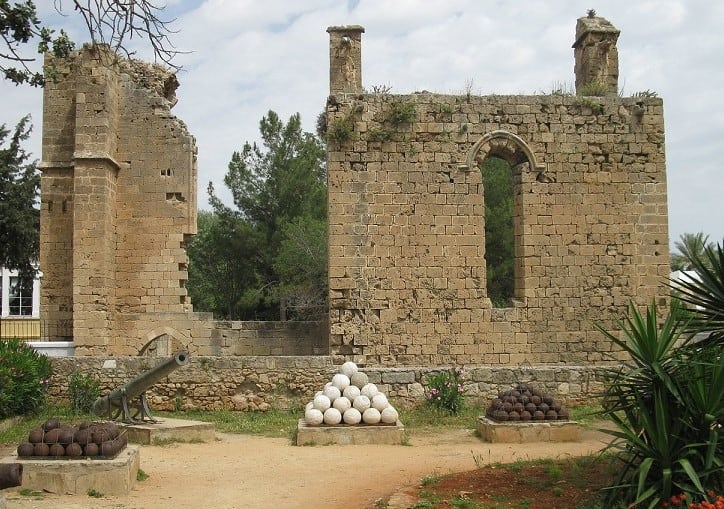
Ancient Salamis, North Cyprus
Ancient Salamis was a city-state on the eastern coast of the island of Cyprus. It was one of the most important and prosperous cities in ancient Cyprus. It played a significant role in the history and culture of the island. Salamis was founded in the 11th century BCE and became the island’s capital during the 7th century BCE. It was an important center for trade and commerce and had a strong military presence due to its strategic location on the eastern coast of Cyprus.
Salamis was also a cultural and artistic center because of its spectacular Roman-era theater, which could seat up to 15,000 people. The city was also home to several important religious sites, including a sanctuary to Zeus and a temple to the goddess Athena.
Throughout its history, Salamis was conquered and ruled by various empires and nations – the Assyrians, Persians, Greeks, Romans, and Byzantines. The city was eventually abandoned in the 7th century CE due to Arab invasions and raids, and its ruins can still be visited today.
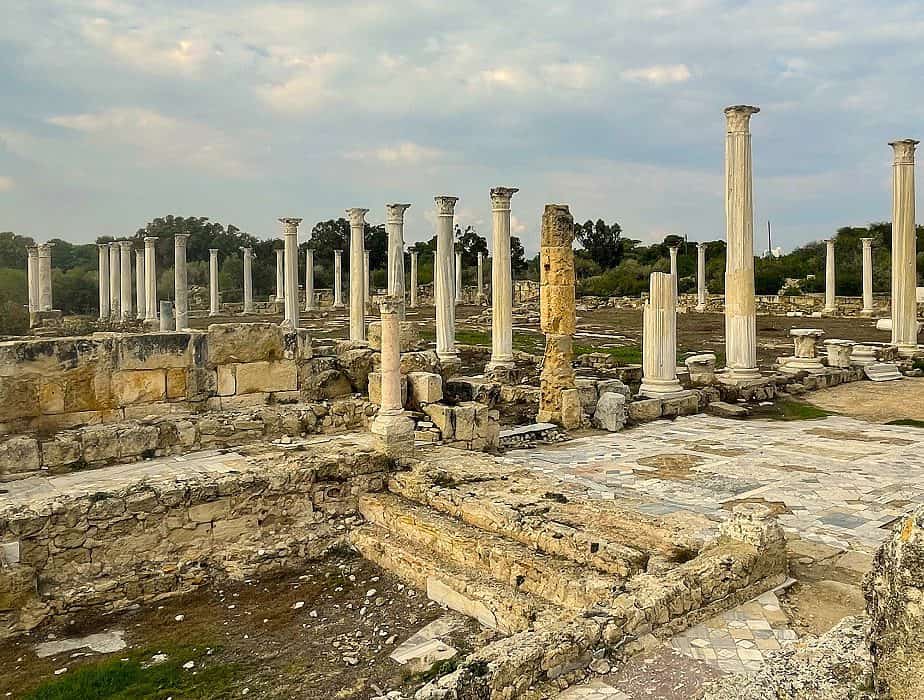
Karpaz Peninsula, North Cyprus
The Karpaz Peninsula is a long, narrow peninsula in the northeastern part of the island of Cyprus. It is known for its rugged natural beauty, unspoiled beaches, and rich history. The peninsula is also home to several important archaeological sites and traditional Cypriot villages.
One of the most famous attractions in the Karpaz Peninsula is Golden Beach, considered one of the most beautiful beaches in the Mediterranean. This long stretch of white sand and crystal-clear water is a popular destination for swimmers, sunbathers, and water sports enthusiasts.
The Karpaz Peninsula is also home to the Karpaz National Park, which covers an area of over 50,000 hectares and includes a diverse range of habitats, including forests, wetlands, and coastal regions. The park has various flora and fauna, including several endangered species.
The peninsula is also rich in history, with numerous ancient ruins and monuments scattered throughout the area. Some of the most notable include the ancient city of Aphendrika, the Byzantine Monastery of Apostolos Andreas ruins, and the ancient city of Karpasia.
The Karpaz Peninsula is a relatively untouched and unspoiled part of Northern Cyprus, making it a popular destination for those looking to escape the crowds and enjoy the island’s natural beauty.

Kantara Castle, Northern Cyprus
Kantara Castle is a medieval castle in the eastern part of Northern Cyprus. It sits on a hill at an altitude of 630 meters above sea level, near the village of Kantara in the district of Famagusta. The castle was built during the Byzantine period and was later home to the Lusignans, Venetians, and Ottomans.
The castle was initially built as a defensive fortification to protect the region from Arab raids. It was strategically located on a hilltop overlooking the northern coastline, providing a clear view of the surrounding area. The castle was made larger and stronger during the Lusignan period in the 13th century.
Kantara Castle is a central keep surrounded by a double wall with several towers and bastions. The castle also has a cistern for water storage and a chapel dedicated to St. Hilarion. The castle’s location and design made it a formidable stronghold and played an essential role in defending the region against invaders.
Today, Kantara Castle is a popular tourist attraction for the public. It offers visitors stunning views of the surrounding countryside and the coastline. The castle is also an important historic site, providing a glimpse into the island’s rich and diverse history.

Buffavento Castle, North Cyprus
Buffavento Castle is a medieval castle located on the top of a mountain in Northern Cyprus, near Kyrenia. The Byzantines built the castle in the 10th century as a defensive fortress to protect against Arab raids.
The castle was later rebuilt by the Lusignans in the 14th century and then by the Venetians in the 16th century. During its history, Buffavento Castle played an essential role in the island’s defense against various invaders, including the Ottomans.
Buffavento Castle is a popular tourist destination today due to its stunning views of the mountains and coastline. However, the castle is in a state of ruin, and visitors must climb a steep path to reach it. Visitors to Buffavento Castle can explore the remains of the castle’s walls, towers, and chapels. They can also take in the panoramic views of the island and the Mediterranean Sea from the castle’s highest point, over 950 meters above sea level.
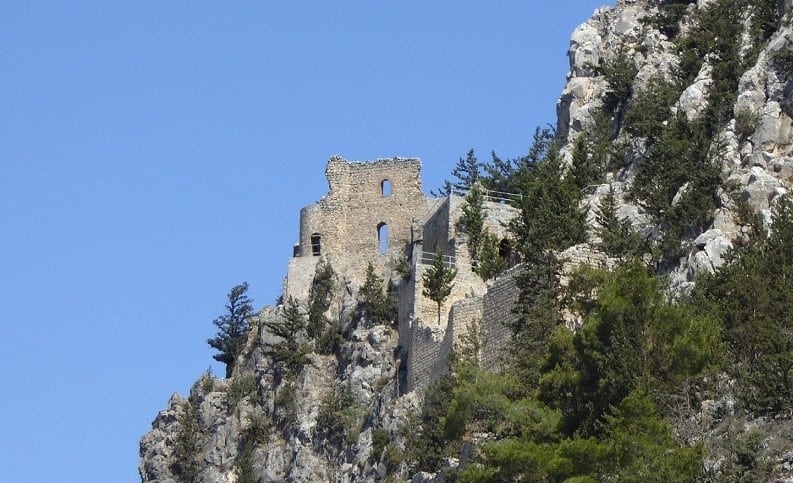
Nicosia Old City, North Cyprus
Nicosia Old City, also known as the walled city of Nicosia, is located in the northern part of Cyprus and is the capital city of the self-declared Turkish Republic of Northern Cyprus. A 16th-century Venetian wall surrounds the old city, and its narrow streets are lined with historic buildings and monuments.
One of the most notable landmarks in the old city is the Selimiye Mosque, built initially as the Cathedral of Saint Sophia during the Lusignan period in the 13th century. The mosque has a distinctive double minaret and is considered one of the finest examples of Gothic architecture in the Eastern Mediterranean.
Other notable landmarks in the old city include the Buyuk Han, a restored Ottoman-era inn serving as a cultural center and marketplace, and the Bedesten, an indoor bazaar that dates back to the 16th century. Visitors to the old city can also explore several museums, including the Cyprus Museum of Modern Arts and the Mevlevi Tekke Museum, which showcases the traditions and history of the Mevlevi Order of Sufism.
Nicosia Old City is also known for its lively atmosphere and bustling street life, with a wide variety of shops, cafes, and restaurants lining its streets. The old city is particularly popular with tourists interested in history and culture, and many visitors spend several days exploring its narrow streets and historical landmarks.
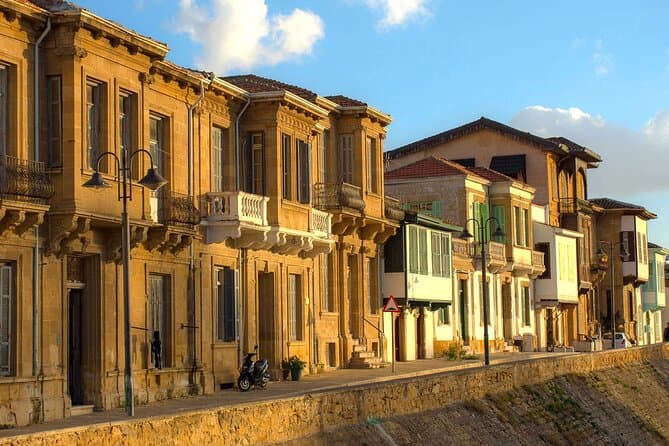
Vouni Palace (Palace of Vouni), Northern Cyprus
Vouni Palace is an archaeological site in the northern part of Cyprus, near the town of Guzelyurt. Built during the 5th century BC by the Persians and was the later residence of the Greeks and Romans.
The palace rests on a hilltop overlooking the Mediterranean Sea. The limestone blocks used to construct it are still visible. The site covers an area of approximately 2,500 square meters. Historians believe it served as a residence for the region’s ruling elite.
Excavations at the site have revealed several rooms, including a central courtyard, a throne room, a reception hall, and private living quarters. There are also remains of a large cistern and a complex system of water channels.
The palace was left in the 4th century AD. It was rediscovery in the early 20th century. Today, the site is open to the public, and visitors can explore the ruins and learn about the history and culture of ancient Cyprus.

Closing Thoughts
Northern Cyprus is a fantastic place to visit. Not only is there plenty to see and do, but it is also not a tourist haven. If you head here for the beaches, you will have them to yourself.
Visiting Cyprus? Let us know where you explore!
Looking for more posts on Cyprus? Start here:
- 20 Plus Things to Do in Cyprus
- Adonis Baths Waterfall in Cyprus
- Ancient Kourion: Cyprus’ House of Eustolios
- Ancient Salamis – The City Of Ruins In Famagusta
- Can You Fly to North Cyprus?
- Cyprus Border Crossing Between North and South Cyprus
- Kolossi Castle in Cyprus – A Hidden Gem
We participate in the Amazon Services LLC Associates Program, an affiliate advertising program designed to provide a means for us to earn fees by linking to Amazon.com and affiliated sites.
Share with others!
Nikki Webster is a travel writer who covers how to travel while grinding a day job without breaking the bank. Nikki is always in search of off-the-beaten-track experiences and unique stays. She is particularly fond of Florida and writes extensively about the state. She flies around 60,000 miles annually and has visited 74 countries, 50 states, and six continents. You can read all about her travels at www.britonthemove.com or follow along on Facebook, Pinterest, and Instagram.
Similar Posts

Is Travel A Hobby? Let’s Find Out!
Is travel a hobby? A philosophical question that people do not necessarily agree upon. In this article, I’ll explain what a hobby is and what qualifies. Additionally, I will discuss the differences between hobbies, interests, and lifestyles as they relate to travel. This post may contain affiliate links. Please read our disclosure and privacy policy for more…

UTO Vacations – What To Expect – An Honest Review
If you travel and subscribe to any travel newsletter, you’ve likely heard of or seen UTO Vacations. They are the tour company behind the famous $299 China vacation package. UTO is often featured under Travelzoo’s UTO Vacations. But what’s it like to travel with UTO Vacations? Let’s find out! This post may contain affiliate links….
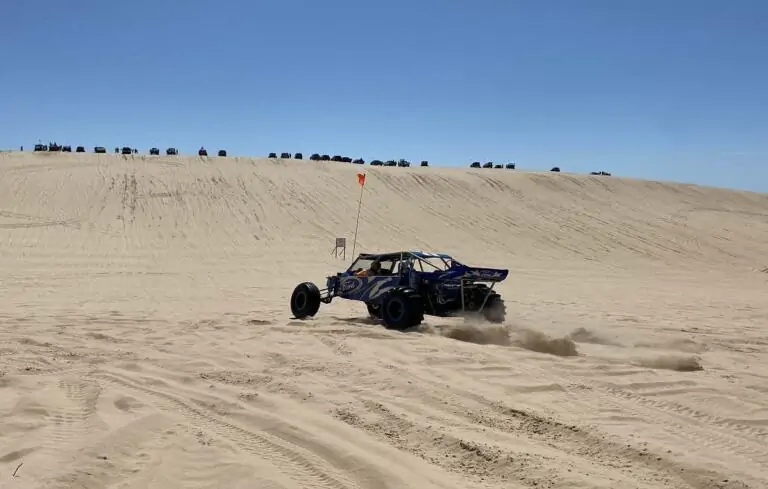
Sand Dunes in Michigan – Experience The Thrill Of Riding Them!
Last summer, I had the opportunity to ride dunes in Michigan at Silver Lake State Park. An activity that many of us do know is a “thing.” It is not just a thing. It is a “big thing” in states like Arizona. California, Colorado, and Michigan. Unknown to many, the western coastline of Lake Michigan…
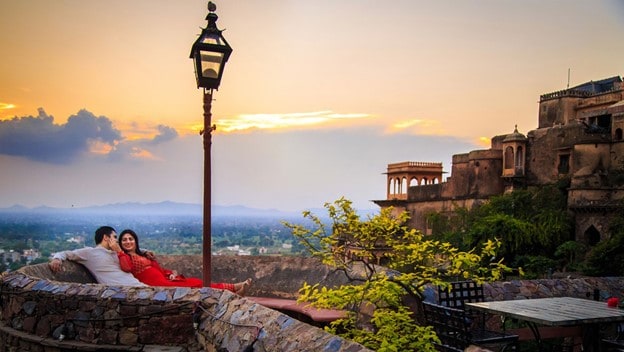
Dubai Vacation – Love it or Hate It?
Let’s talk about a Dubai vacation and everything that most people will not tell you. Sure, Dubai is the Middle East’s tourist capital, and you either love it or hate it. I would not go as far as to say I hated it, but I was not impressed. Instead, I am still at a loss…
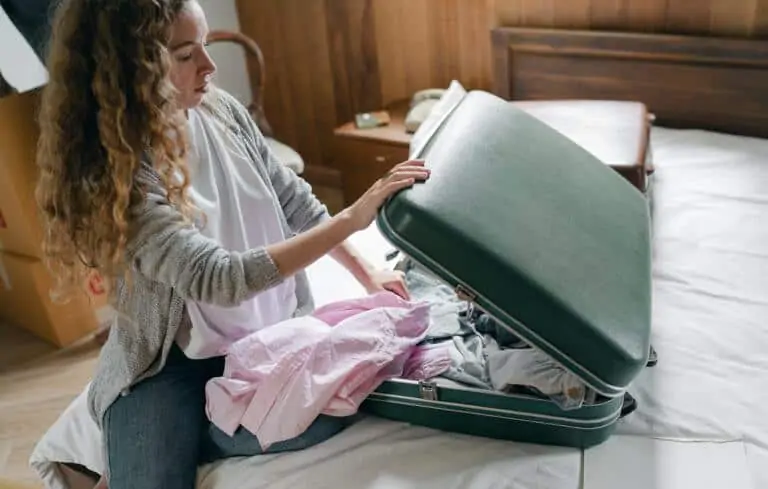
10 Best Packing Tips From Travel Experts
Believe it or not, packing tips might be one of the most underrated pieces of advice you get. After all, most of us experienced travelers consider ourselves to be great at packing. And, everyone has a tip on how they pack. The best travel is when you travel light. Imagine not having heavy bags to…
Yet the people are racist and very greedy.
Wow, Tom, that’s a tad harsh… there are terrible people everywhere but I didn’t experience anything overt in North Cyprus. Nikki
Leave a Reply Cancel reply
Your email address will not be published. Required fields are marked *
Save my name, email, and website in this browser for the next time I comment.
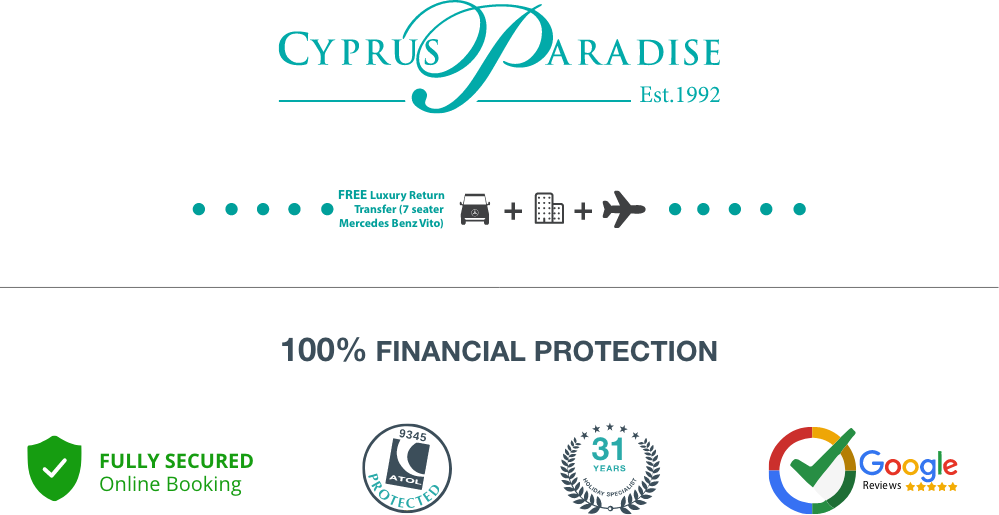
We use cookies to optimise the functionality and give you the best possible experience
Call our experts on
Your holiday is safe with us
North Cyprus Guided Tours
From a historical tour of famagusta and salamis ruins to the natural beauty of the karpaz peninsula and the unique opportunity to visit the last divided capital in the world, nicosia., guided tours, experience north cyprus with our guided tours....
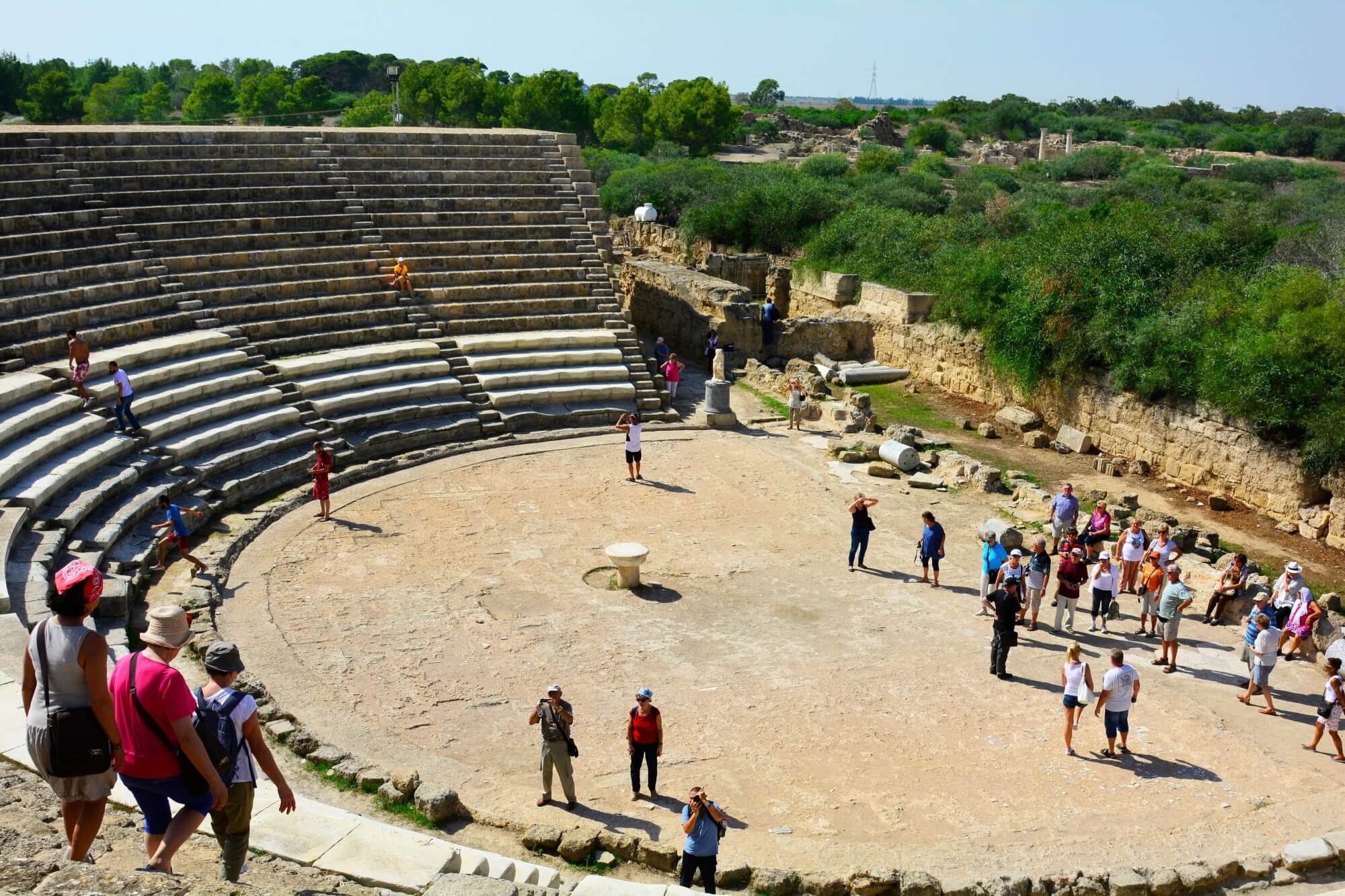
Take a guided tour to the Salamis Ruins
Take an adventure with our North Cyprus guided tours…
Cyprus Paradise has a whole range of North Cyprus guided tours that will add extra enjoyment to your holiday. We produce the buses, provide the guides, organise the itineraries and the restaurants, so you don’t have to worry about anything. The destinations vary but we can guarantee that all the major historical sites of Northern Cyprus are on our tour schedule and to accompany you on each of the tours there will be a local guide.
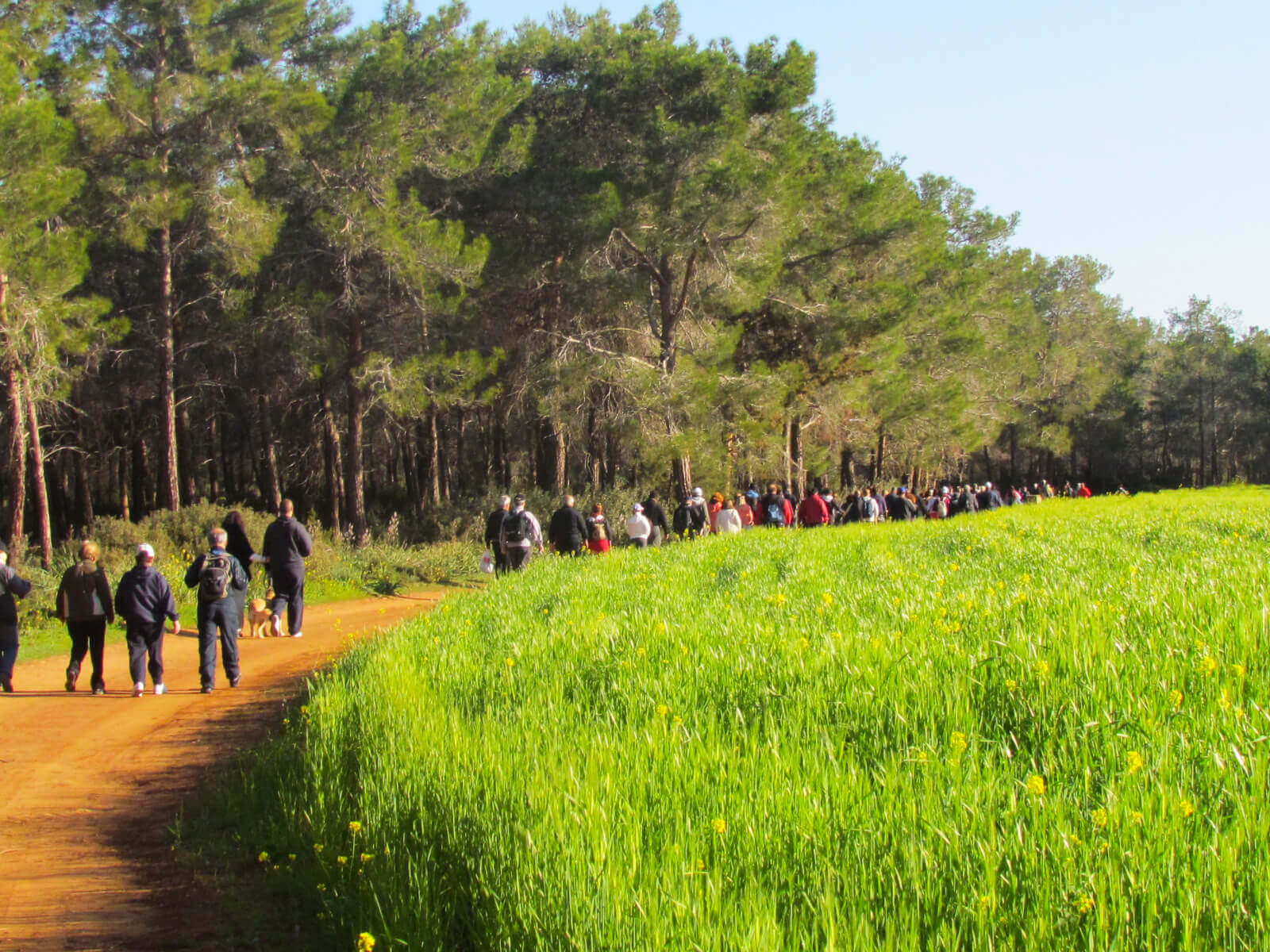
Explore the beautiful nature of North Cyprus
The following are examples of our most popular tours: Full day tour to Salamis , the St Barnabas Monastery and the walled city of Famagusta, with lunch included. This is a tour that will encompass the bath house area, theatre and gymnasium at the ancient site of Salamis, once the most powerful city on Cyprus. A visit to the monastery of St. Barnabas, the patron saint of Cyprus, the church and ancillary buildings are now an icon and antiquities museum. A walking tour of Famagusta will take in such landmarks, as Othello’s tower the citadel that guards the harbour; the great cathedral of St. Nicholas that has been since 1571 the Lala Mustafa Pasha mosque; the remains of the palace of the Provveditore; the prison of the writer and philosopher Namik Kemal, and the church of SS Peter and Paul, now the Sinan Pasha mosque.

North Cyprus guided tours on offer at Cyprus Paradise include:
- Full Day Famagusta Tour including; Salamis Ruins & St Barnabas Monastery, Varosha Ghost Town with Lunch
- Full Day Karpaz Peninsula Tour including; Iskele & Ayios Philon
- Full Day Lefkosa (Nicosia) Tour of the world's last divided capital city
- Full Day Kyrenia, Bellapais & St.Hilarion Tour
- Full Day Guzelyurt Tour including; Archaeological Museum, St. Mamma’s Church and Saturday Bazaar. Depending on the season you can pick strawberry’s or go for a long swim.
- Full Day Boat Tour from Kyrenia harbour visiting popular sandy beaches.
- Half Day Scuba Diving Tour to Unleash your Inner Explorer
- Full Day Jeep Safari Tour with Breathtaking Views
- Thrilling Day at the Largest Aqua Park in North Cyprus
If you would like to book any of the guided tours of North Cyprus mentioned here, please speak to your Cyprus Paradise Representative in resort, or your Cyprus Paradise Sales Assistant when you call us to book your North Cyprus holiday.

You may also like...
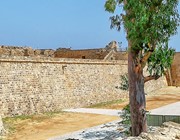
The Othello's Tower
Definitely worth a visit in Famagusta...

Saint Barnabas Monastery
St Barnabas Monastery is well worth a visit...
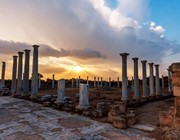
Salamis Ruins
Explore the ancient Roman city...
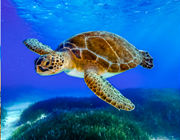
Bellapais Abbey
The legend speaks for itself …
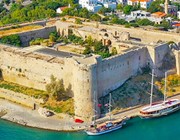
Kyrenia Castle
Castle lovers' paradise…
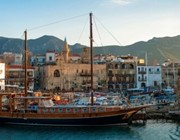
Kyrenia Harbour
Experience the wonders of Kyrenia Harbour…
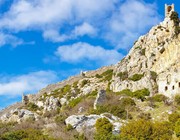
St. Hilarion Castle
The castle with amazing views of Kyrenia...
- Flight Only
- Golf Holidays
- Discover Cyprus
CALL OUR EXPERTS
0345 512 0777.

Daily News Briefing

In today’s episode, Deputy Tourism Minister Costas Koumis said the bankruptcy of German tourism group FTI is a negative development for Cyprus’ tourism.
Meanwhile, the owners of a hotel in the north on Tuesday denied rumours that Ukrainian President Volodymyr Zelenskiy owns the property ..
Elsewhere, Nicosia’s municipal swimming pool will not be open to the public until next year.
All this and more in the Cyprus Beat briefing brought to you by the Cyprus Mail .

Tom joined the Mail in 2023. An award-winning journalist, he speaks four languages fluently, watches his local football team home and away, and is an avid traveller.
In case you missed it

What’s it really like being John Malkovich

The Cypriot versus the mountain of hell

A scramble to save Cyprus’ treasures amid chaos of invasion

Caught in the trap of Cyprus’ migration system

IMAGES
VIDEO
COMMENTS
Tourism has affected the development of Northern Cyprus. Its share of the GDP of Northern Cyprus is significant. In the early 1970s Varosha, Famagusta was the most popular destination in Cyprus, (and popular in the world) before its abandonment in Turkish invasion of Cyprus 1974. Topographic map of Northern Cyprus with the Kyrenia Mountains to ...
Explore. In North Cyprus, as in other Mediterranean countries the olive tree can be seen everywhere, in the wild and under... discover. Selimiye Mosque historically known as Cathedral of Saint Sophia, is a former Roman Catholic cathedral converted into a mosque. Explore.
Since Cyprus has two main influential ethnic groups, many towns and cities in North Cyprus are known by two names, one of Greek origin, the other of Turkish. For example, the popular tourist town of Kyrenia (Greek origin) is also known as Girne (Turkish), while the capital Nicosia is also known as Lefkoşa .
North Cyprus is a sun-dappled home to medieval castle ruins, vast archaeological sites of once mighty classical cities, and snoozy villages where old men gather on the teahouse veranda to while away the daylight hours. Most visitors come for lazy resort breaks lolling in the sunshine, but this slither of land which swoops from mountain to sea ...
Girne/Kyrenia is a coastal city and, arguably, at the heart of the North Cyprus tourism industry. Photos of its harbour and castle are often used in tourism brochures. Both inside and outside the city limits are a number of great hotels, making the city and area surrounding it a great base for exploring the rest of the island territory.
Only Turkey recognizes the self-proclaimed Turkish Republic of Northern Cyprus as legitimate. Though the local tourism ministry estimates that 360,000 people live here, in the eyes of the world ...
Explore its historic harbor and visit the Kyrenia Castle. Day 2: Drive east along the coast to the city of Famagusta. Visit the ghost town of Varosha and the walled city, featuring Othello's Tower. Day 3: Head north to the Karpaz Peninsula. Enjoy the Golden Beach, one of the most beautiful in Cyprus.
One of the best tourist attractions in the North of Cyprus, Salamis Ruins, is an ancient Roman city just north of Famagusta. Bellapais Abbey. This old 13 th Century abbey still hosts concerts and events and is truly an amazing sight. Bellapais Village also offers lovely taverns and restaurants and spectacular views of Kyrenia.
North Cyprus offers something unique for all its guests - from the sun worshipper to the botanist, from ecologically conscious families through to romantic couples. Now is the time to discover the hidden paradise of North Cyprus, now is the time to visit NCY. A solitary island in the Eastern Mediterranean, Cyprus has had a rich history of ...
Conclusion: Things to Do in Northern Cyprus. As you can see, Northern Cyprus offers a diverse array of activities and attractions for travelers seeking adventure, relaxation, and cultural immersion. Whether you're exploring ancient ruins, lounging on pristine beaches, or indulging in delicious cuisine, Northern Cyprus promises an ...
Most of the world knows this island as Cyprus but to the Turks, it is the Turkish Republic of Northern Cyprus (TRNC) which the Turkish Cypriot-controlled area declared itself in 1983. We will get into a little bit of history and things you should know but know this first, Northern Cyprus is a gem and it totally is worth seeing.
The most comprehensive tourist guide for Northern Cyprus, Cyprus with advice on things to do and see, places to visit and more. Insight Guides provides inspiration for travelling around the world. ... It is possible to whizz around Northern Cyprus in a day and cover - or at least glimpse - some of the main highlights, although unless you ...
GIRNE/KYRENIA. This town is one of the best places to visit in Northern Cyprus and has a real mix of local life and touristy areas. The main streets are lined with cafes, shops and kebab houses. We had some of the best börek (Turkish pastry dish filled with meat or cheese.)
Around Gazimağusa. Some 8km north of Gazimağusa, and signposted from both the coast road to Boğaz and the main road to the capital, is a group of ruins which are among the most important and impressive in all of Cyprus. By far the most famous and most photographed are the remains, largely Roman, of Ancient Salamis.But within a couple of minutes' drive of this colossal seaside site are the ...
Visit North Cyprus is the TRNC tourist agency. Talk [edit] The language of Northern Cyprus is Turkish (see the Turkish phrasebook), with a distinct dialect in casual conversation. English is widely spoken in the hospitality sector, especially in Kyrenia. Obscure dialects of Greek persist among a few gnarly old folk, but you're more likely to ...
The Republic of Cyprus got its independence from the United Kingdom in 1960. Historically, the country always had its share of Greek-speaking (the majority) and Turkish-speaking inhabitants. These two groups used to live all around the island. But when there was an attempt to annex Cyprus to the Greek territory in 1974, Turkey invaded the island.
16. Walk the Venetian Walls around the old city of Famagusta. Famagusta (also known as Gazimağusa ) is an old port town on the east coast, and was the key trading point of Medieval and Ottoman Cyprus. The old city is surrounded by Venetian Walls and jam packed with ruins. Matt and I on the Venetian Walls of Famagusta.
Welcome to Northern Cyprus! Picturesque beaches, breathtaking attractions, and top-notch entertainment - Northern Cyprus is taking off in 2023! It's no surprise that more and more tourists are visiting the island and calling it their favorite travel destination. Come and see for yourself everything that Northern Cyprus has to offer! About us
Kyrenia Castle, North Cyprus. Kyrenia Castle is a historical castle in the city of Kyrenia, on the northern coast of Cyprus. This castle is one of the island's most well-known landmarks. It is one of the finest examples of medieval fortification in the Mediterranean. Built by the Byzantines in the 7th century AD.
North Cyprus guided tours on offer at Cyprus Paradise include: Full Day Famagusta Tour including; Salamis Ruins & St Barnabas Monastery, Varosha Ghost Town with Lunch. Full Day Karpaz Peninsula Tour including; Iskele & Ayios Philon. Full Day Lefkosa (Nicosia) Tour of the world's last divided capital city.
Kyrenia is considered the capital of tourism in Northern Cyprus, with its numerous hotels, entertainment facilities, vibrant nightlife and shopping areas. In 2012, 62.7% of the visitors in Northern Cyprus stayed in the Girne District during their visit. Out of the 145 hotels in Northern Cyprus, 99 were in the Girne District in 2013.
Abstract. In contrast with the rapid pace of tourism development in the Greek Cypriot south of the island, 1 tourism has grown only slowly in the Turkish Cypriot north since inter-communal hostilities in summer 1974 led to the de facto division of Cyprus. The non-recognition of the Turkish Cypriot sector has prevented direct air communication ...
Tourism Manaf;emmt 1994 15 (5) 37 (1-4 (X) Reports Tourism in Northern Cyprus: patterns, policies and prospects In contrast with the rapid pace of tourism development in the Greek Cypriot south of the island.' tourism has grown only slowly in the Turkish Cypriot north since inter-communal hostilities in summer 1974 led to the de facto division ...
The 1974 invasion of Cyprus by Turkey remains a major source of tension between the two countries. United Nations Security Council resolutions recognise the occupation of northern Cyprus as illegal. Cyprus remains divided, with a northern portion controlled by a puppet Turkish Cypriot administration controlled by Ankara and a southern portion ...
In today's episode, Deputy Tourism Minister Costas Koumis said the bankruptcy of German tourism group FTI is a negative development for Cyprus' tourism. Meanwhile, the owners of a ...